- 2024 BOAT BUYERS GUIDE
- Email Newsletters
- Boat of the Year
- 2024 Freshwater Boat and Gear Buyers Guide
- 2024 Boat Buyers Guide
- 2024 Water Sports Boat Buyers Guide
- 2023 Pontoon Boat Buyers Guide
- Cruising Boats
- Pontoon Boats
- Fishing Boats
- Personal Watercraft
- Water Sports
- Boat Walkthroughs
- What To Look For
- Best Marine Electronics & Technology
- Watersports Favorites Spring 2022
- Boating Lab
- Boating Safety


Using a Hydrofoil to Improve Efficiency
- By Alan Jones
- Updated: July 15, 2021
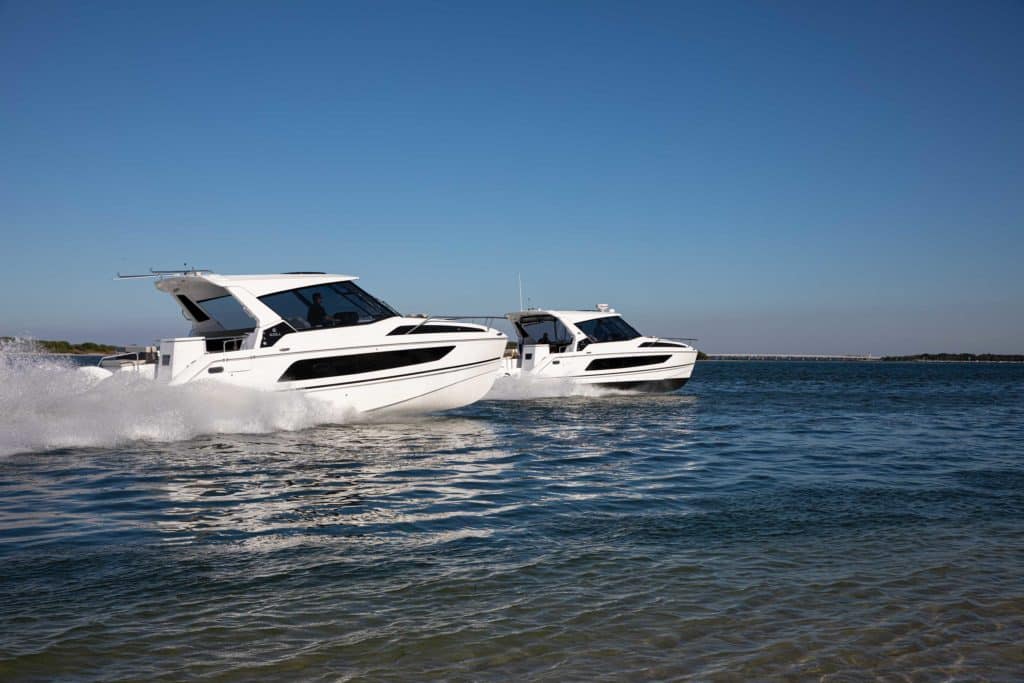
It’s hard to believe a piece of metal with no moving parts can be the approximate equivalent of adding 200 horsepower, 100 gallons of fuel and 100 miles of extra range. But when it’s a hydrofoil attached between the hulls of an Aquila 36 Sport power catamaran (above, far right), that’s the net effect.
While the efficacy of foiling boats is well-documented, this technology has surprisingly had little impact on the recreational powerboat market. Hydrofoils that lift a hull entirely out of the water seem to be too alien to most boaters. Plus, most foil designs require dynamic control using computers to remain aloft at a constant elevation. But they are proven to be effective. With the Aquila 36 Sport, we experienced its benefits on a recreational boat and compared it in real time to the same boat without a foil but with 200 extra ponies. Here’s what we found.
Hydro What?
Gino Morrelli and Pete Melvin, of Morrelli and Melvin Design and Engineering, applied their decades of foiling experience to design the Hydro Glide Foil System for Aquila. It consists of a main hydrofoil attached slightly aft amidships to each hull and the top of the tunnel. It lifts approximately 40 percent of the hull’s weight out of the water when at cruise speeds, for better performance and fuel economy. Farther back, twin fins act like an airplane’s horizontal stabilizers to prevent porpoising at higher speeds. What makes hydrofoils so effective is the dramatic reduction in drag. A typical planing hull has a 4-to-1 lift-to-drag ratio, while a hydrofoil can have up to a 25-to-1 lift advantage.
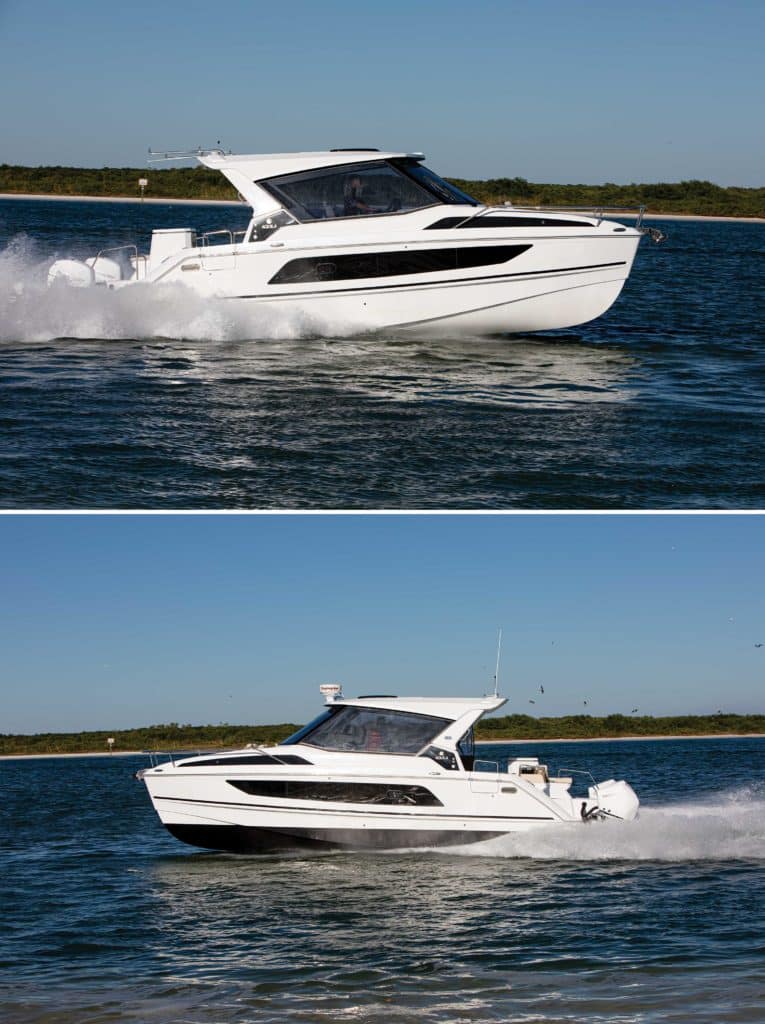
How does it work? The fields of aerodynamics and hydrodynamics are kissing cousins, so many of the principles of one apply to the other. The silhouette of a typical asymmetric hydrofoil wing wouldn’t look out of place on a 737. It consists of a convex curve on the upper side and a flatter bottom side. These taper down toward the rear. Bernoulli’s principle explains that when air or water rushes over the top side of a wing, the medium has to travel farther, so it moves faster. This creates lower pressure on top, allowing the higher pressure on the bottom to push upward.
Sir Isaac Newton’s third law also applies to hydrofoils. The simplified version says that for every action, there is an equal and opposite reaction. So, if a foil is directing the water down, it’s pushed back and the foil rises, creating lift. This effect is enhanced by an increased angle of attack at the leading edge to create more lift. In the case of Aquila’s Hydro Glide foil, it will still provide lift even if the boat’s bow is pointing down 3.5 degrees, which will be useful when running down-sea because it avoids transforming the hydrofoil into the equivalent of a down-planer or sea anchor.
Too much lift can also be a problem, according to Alain Raas, brand manager for Aquila Boats. “Because water is denser, a hydrofoil creates about 830 times more lift for the same area and speed compared to an airplane wing, so you can use a much smaller foil in water than air,” Raas says.
Most hydrofoils operate near the surface and can ventilate, which is a phenomenon that occurs when the low-pressure side of a foil pulls air from the surface and destroys lift on the foil, Raas explains. “Foil depth, sweep, dihedral and section shape all play a significant role in avoiding ventilation,” he adds.
Dueling Aquilas
We were able to arrange a test staging out of MarineMax in St. Pete Beach, Florida. MarineMax is Aquila’s exclusive distributor in the US. The Aquila brand is owned by the Sino Eagle Group, a high-tech Chinese builder that extensively uses vacuum-infusion technology to build the boats. J&J Design Group provided a complete design package for the Aquila 36 Sport.
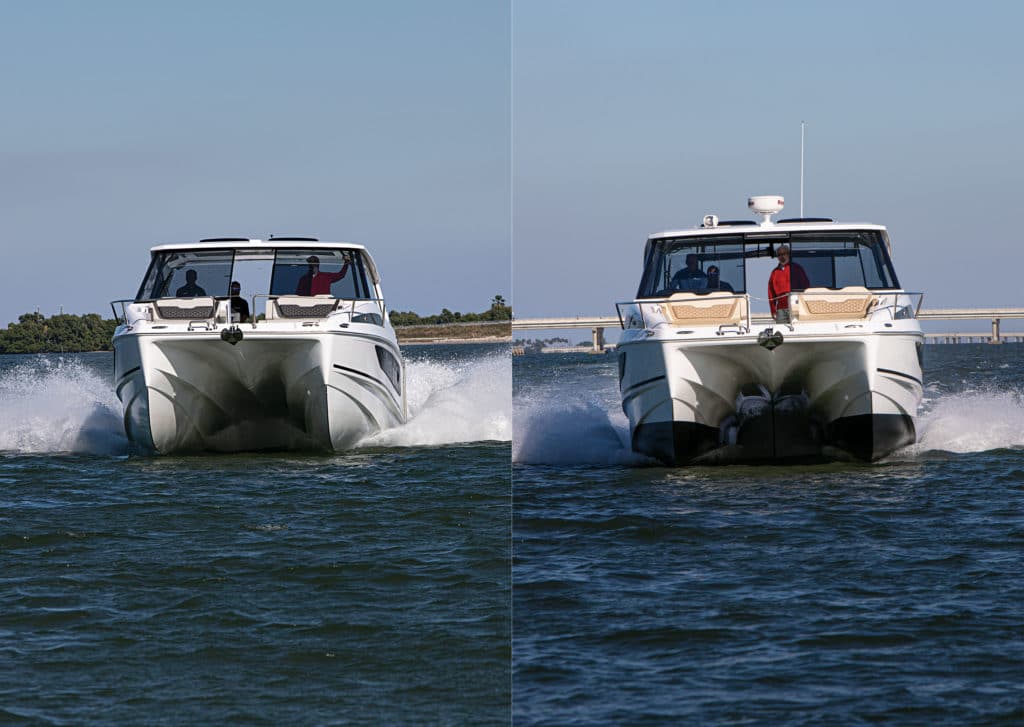
Aquila is largely the brainchild of Lex Raas, Alain’s father and president of Aquila at MarineMax. Lex is South African, and his career journey has taken him from working for Beneteau (the world’s largest boatbuilder) to the Moorings (the world’s largest vacation charter operation) to MarineMax (the world’s largest boat dealer). While a big believer in power catamarans for their roominess and comfort, Lex didn’t like that most were converted sailing vessels. The unveiling of the Aquila 36 Sport power catamaran in 2017, the company’s first outboard-powered model, ushered in a new era of high performance. Because these boats would be used on bareboat charters driven by skippers of varying degrees of expertise, they are purposely designed to be easy to pilot.
One Cool Cat
Our first sea trial began aboard the nonfoiled Aquila, joined by Alain Raas and Jacob Coyle, a MarineMax sales associate. When we headed out into the Gulf of Mexico through the Pass-a-Grille entrance, the wind was blowing 17 mph and gusting to 23 mph from the northwest, creating steep 4-foot waves. In other words, it was a glorious cat day.
Our nonfoiled test boat was powered by a pair of Mercury Verado 400 outboards derived from the Mercury Racing division. This engine does some serious overachieving given its smallish 2.6L inline-six-cylinder block, thanks to twin-scroll superchargers, which lend it substantial punch when a driver needs a blast of power. Ultra-rapid acceleration is less important for catamarans, which usually do best in rough water when kept at a steady speed that is faster than you would think.
Read Next: Aquila 36 Test
The big difference between most power cats and the 36-foot Aquila 36 Sport is the Aquila’s incredible 14-foot-7-inch beam, which creates a living room’s worth of space in the cockpit/salon for up to 26 passengers and is mostly enclosed by an optional hardtop. In addition to helping its optional Joystick Docking for Outboards system work more efficiently, this wide footprint creates an ultra-stable platform that will be reassuring to those without sea legs (or stomachs). It’s so stable, according to Alain, no customers have ever asked Aquila to install a Seakeeper gyrostabilizer.
Settling into a cruise speed of 33 mph felt like the cat’s happiest velocity for that sea state. The narrow profile of the twin hulls cleaved the water without the pounding that characterizes most monohulls when running into steep waves. We used a little bit of engine trim to bring the bow of the hulls out of the water to reduce drag and prevent bow steering, and the boat offered a smooth ride, even when we turned the beam to the waves. Narrower cats of similar lengths can snap-roll alarmingly in large beam seas, but the Aquila remained surprisingly level.
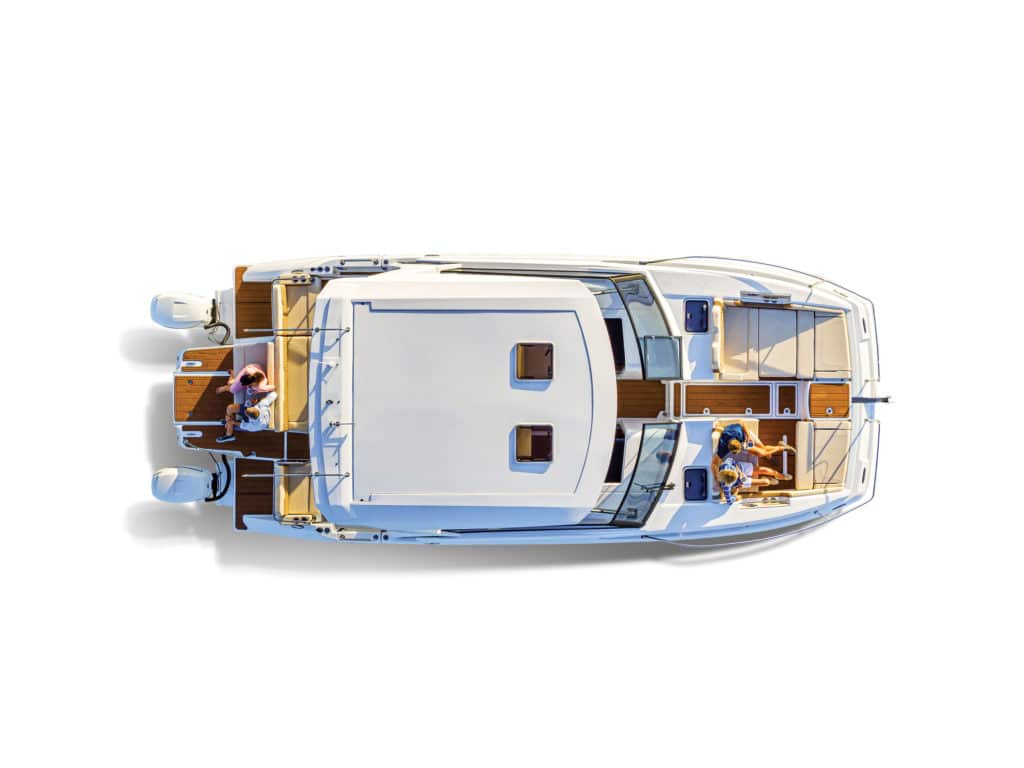
Heading into Bunces Pass is tricky because of shoaling on each side, but once through, it put us squarely into the Tampa Bay area’s recreational boating epicenter. With Egmont Key State Park and Fort De Soto Park to starboard and Shell Key Preserve to port, we were surrounded by great beaches that are perfect to nose up to. The Aquila 36 Sport Hydro Glide showed off its ability to float in just 2 feet of water with the engines trimmed up as we beached it. We beached the foil boat too. Even though the bottom of the foil is about a foot lower than the hulls, its extruded aluminum construction is stout enough to withstand being gently beached.
Time to Fly
Switching boats, we were curious to feel the difference the foil makes. The experience was subtle. The Hydro Glide foil is positioned just forward of the boat’s longitudinal center of gravity and set at zero degrees of attack, allowing the driver to use engine trim to increase the angle for optimal lift. On this boat, little trim is needed because the optimal angle of attack of the hydrofoil is only about 1.5 degrees, according to Lex. In our case, because the fuel tanks were almost full, we just trimmed the engines to their neutral position and let the weight of the fuel give the Aquila 36 Sport Hydro Glide its proper bow-up angle.
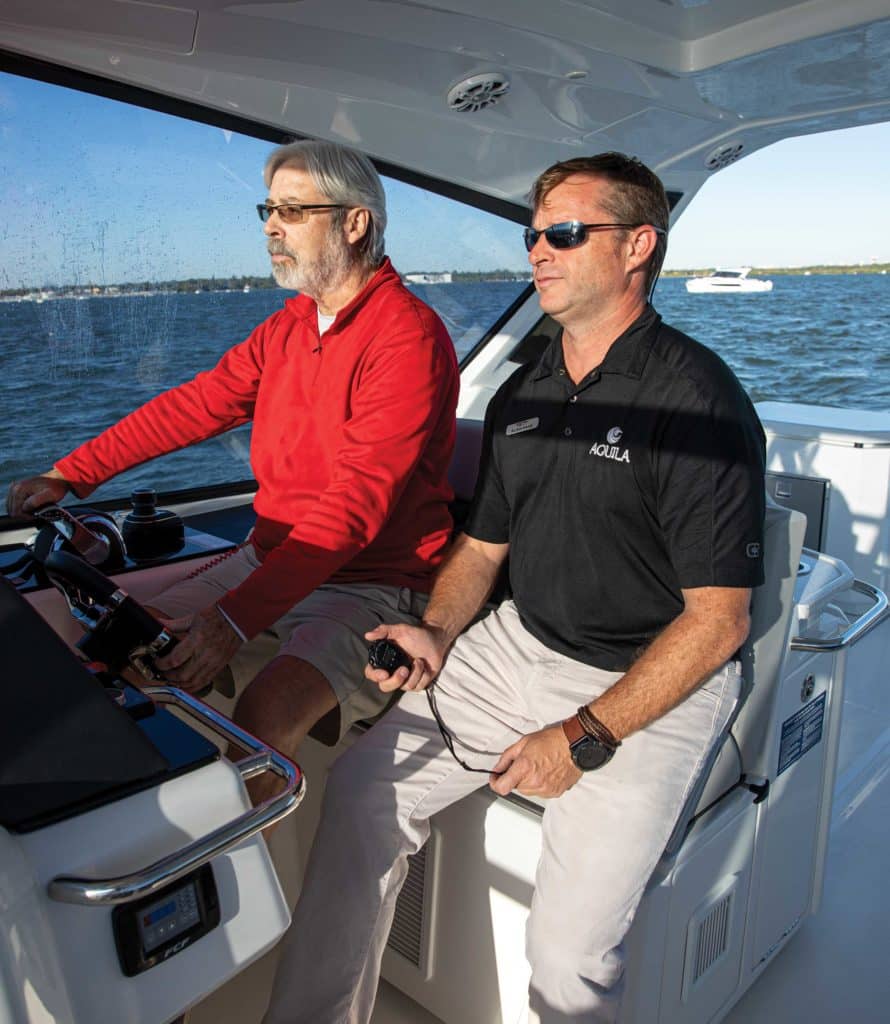
Because the Hydro Glide Foil System lifted the hull only about 6 inches, there was a general feeling of riding higher in the water, but the most tangible evidence was how the steering felt lighter and more responsive—an indication that the foil is running at its proper angle of attack. The wake behind us flattened out significantly, unlike the tall rooster tail and wake that shot aft from the nonfoiled boat. Offshore, it handled the steep chop well and felt best at a cruise speed of 38 mph. There was never a moment when it lost its lift from the foil.
Another difference lay in the cornering characteristics. Without the foil, the 36 Sport has a slight lean to the outside, which some find off-putting. With the Hydro Glide foil, the cat leaned slightly inward and felt nimbler as it carved hard turns. A driver can overcook it during extremely hard turns—the hulls can dig in and turn more sharply than expected—so whipping it into a corner like it’s a jet boat isn’t advised.
Foils that raise a boat’s hull entirely out of the water can plummet should the boat lose lift. But the dihedral V-shape of the Aquila’s foil allows it to descend a little at a time when exposed above the water. This results in gentle corrections in heave, or a boat’s up-and-down motion.
The Numbers Don’t Lie
The Aquila 36 Sport Hydro Glide reached plane in 6.4 seconds, which was 1.4 seconds faster than the nonfoiled boat. Its zero to 30 mph time was 2.4 seconds quicker, taking 12.4 seconds. While those might sound like modest gains, remember this test boat had twin 300 Mercury Verado engines—200 fewer horses than the nonfoiled boat. Of course, these 300s are the new-generation Mercury V-8 engines, featuring 4.6L in a naturally aspirated design instead of the 400′s 2.6L twin-supercharged powerplant. Having two more cylinders and 2 liters of increased displacement negates the need for supercharging because big blocks inherently have more low-end torque.
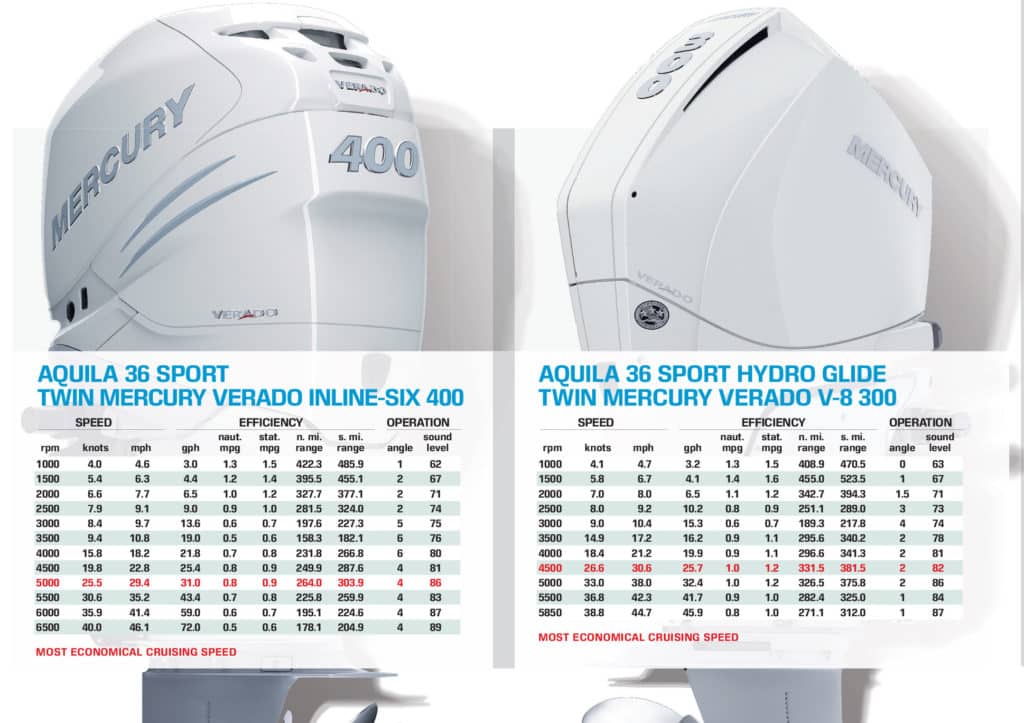
Most impressive was the lack of penalty for going fast on the 36 Sport Hydro Glide. Even at its top speed of 44.7 mph, it was still getting nearly 1 mpg, and the effect on its range was dramatic. At that speed with a full 356-gallon tank, we could theoretically travel the 322 miles from St. Pete Beach to Havana, though exceeding our 10 percent reserve. The nonfoiled Aquila 36 Sport, traveling at its top speed of 46.1 mph, would fall well short of reaching Key West (231 miles away) with a full tank. At its best cruise speed of 30.6 mph, the hydrofoil-equipped Aquila can go 381.5 miles, compared to the nonfoiled version’s 303.9-mile range, when traveling at 29.4 mph, factoring in a 10 percent reserve.
At first blush, opting for the Hydro Glide Foil System might cause sticker shock with its $32,452 price tag, which equates to running through about 13,000 gallons of fuel at $2.50 per gallon to recoup the investment. But if you factor in the difference in buying a pair of 300s versus 400s, the price is much closer, and you get a better-handling boat with more capability because of its increased range. Aquila 36 Sport owners will be happy to discover the Hydro Glide Foil System can be retroactively fitted at an estimated additional labor cost of $10,000. Twin 300s are the max power with the foil because higher speeds cause cavitation, which then adds drag. But the improvements in ride, acceleration and range make this the biggest no-brainer on the options list.
- More: Aquila , Boats , Cruising Boats , versus
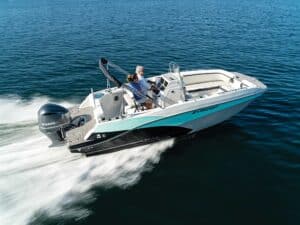
Boat Test: 2024 Starcraft SVX 231 OB CC
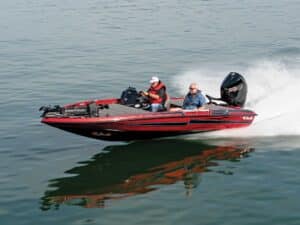
Boat Test: 2024 Bass Cat Caracal STS
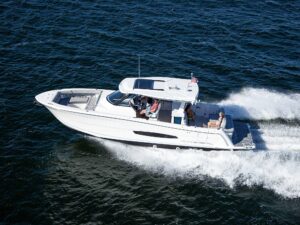
Boat Test: 2024 Regal 38 Surf
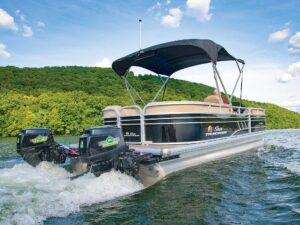
Using Hydrofoils to Improve Boat Performance
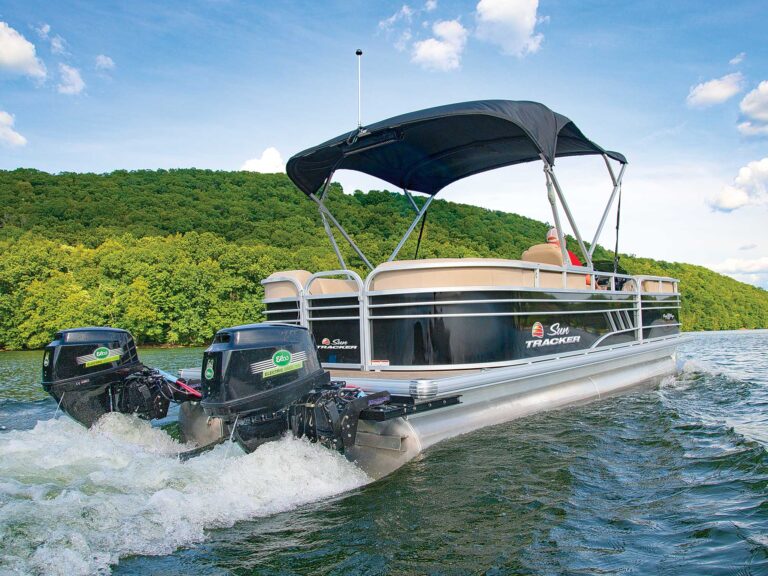
We Test Interlux Trilux 33 Aerosol Antifouling Paint
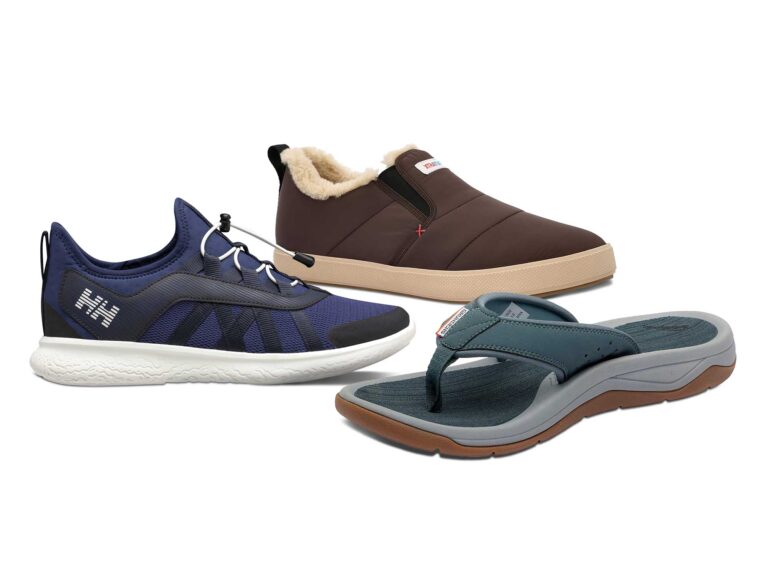
Boating Shoes for Spring and Summer

MasterCraft Celebrates International Women’s Day With Fourth Annual ‘Let Her Rip’ Campaign

- Digital Edition
- Customer Service
- Privacy Policy
- Cruising World
- Sailing World
- Salt Water Sportsman
- Sport Fishing
- Wakeboarding
Many products featured on this site were editorially chosen. Boating may receive financial compensation for products purchased through this site.
Copyright © 2024 Boating Firecrown . All rights reserved. Reproduction in whole or in part without permission is prohibited.

Support our hydrofoil educational content for free when you purchase through links on our site. Learn more
[2023] Hydrofoil Yacht: The Ultimate Guide to Sailing on Foils
- November 1, 2023
- Hydrofoil Basics
Quick Answer: A hydrofoil yacht is a sailboat equipped with wing-like foils that lift the hull out of the water as it gains speed. This reduces drag, increases speed, and provides a smoother ride. Hydrofoil yachts can be retrofitted on both monohull and multihull sailboats, with different types of foils used for stability and control.
Welcome to Hydrofoiling™, where we bring you all the latest and greatest information about hydrofoil boarding. In this comprehensive guide, we’ll dive into the world of hydrofoil yachts, exploring their history, configurations, classes, and more. Whether you’re a seasoned sailor or a curious beginner, this article will provide you with expert advice and insights into the exciting world of hydrofoil yachts.
Table of Contents
Quick answer, quick tips and facts, background: the evolution of hydrofoil yachts, types of hydrofoil yachts, hydrofoil classes: from moths to ac75, hydrofoil yacht brands and models, advantages and disadvantages of hydrofoil yachts.
- Recommended Links
- Reference Links
A hydrofoil yacht is a sailboat equipped with wing-like foils that lift the hull out of the water as it gains speed. This lifting action reduces the wetted area of the hull, minimizing drag and allowing the yacht to achieve higher speeds. Hydrofoil yachts can be retrofitted on both monohull and multihull sailboats, with different types of foils used for stability and control.
Shopping Links: Check out hydrofoil yacht products on Amazon | Shop hydrofoil yacht on Walmart | Etsy hydrofoil yacht products
- Hydrofoil yachts use foils to lift the hull out of the water, reducing drag and increasing speed.
- Different types of foils, such as T foils, C foils, S foils, and L foils, are used for stability and control.
- Hydrofoil yachts can be retrofitted on both monohull and multihull sailboats.
- The International Moth class is one of the most widespread uses of hydrofoils in sailboats.
- Hydrofoil yachts can achieve impressive speeds, with some reaching over 50 knots.
Hydrofoil technology has been around for over a century, with the first patent for a hydrofoil boat filed in 1898 by Italian engineer Enrico Forlanini. Since then, hydrofoil yachts have undergone significant advancements, transforming the sailing experience and pushing the boundaries of speed and performance.
The concept behind hydrofoil yachts is simple yet ingenious. By using wing-like foils mounted under the hull, these yachts can lift themselves out of the water as they gain speed. This lifting action reduces the wetted area of the hull, minimizing drag and allowing the yacht to glide effortlessly through the water.
Hydrofoil yachts come in various configurations, each designed to optimize performance and stability. Let’s explore some of the most common types of hydrofoil yachts:
Monohull Hydrofoil Yachts : Monohull hydrofoil yachts feature a single hull and employ a “ladder” arrangement of hydrofoils. These hydrofoils typically have a dihedral angle of around 50 degrees and are complemented by a stabilizing rudder foil. This configuration provides stability and control, allowing the yacht to sail smoothly on foils.
Multihull Hydrofoil Yachts : Multihull hydrofoil yachts, such as catamarans and trimarans, offer increased stability and performance. These yachts use wider planforms, allowing for greater lift and control. Some multihulls utilize three foils, with two main forward foils providing lift and a horizontal foil on the rudder for additional control.
Hydrofoil Catamarans : Hydrofoil catamarans, also known as foilcats, combine the stability of a catamaran with the speed and efficiency of hydrofoils. These yachts can achieve impressive speeds while maintaining excellent stability, making them popular choices for racing and recreational sailing.
Hydrofoil technology has found its way into various sailing classes, revolutionizing the way we sail. Let’s take a closer look at some of the notable hydrofoil classes:
International Moth : The International Moth class is one of the most widespread uses of hydrofoils in sailboats. These single-handed dinghies feature foiling capabilities, allowing sailors to achieve incredible speeds and maneuverability. The class has seen rapid growth since 2001, with carbon fiber foils and advanced design techniques pushing the boundaries of performance.
Waszp : The Waszp class is similar to the International Moth class but utilizes aluminum foils instead of carbon fiber. This makes the Waszp more accessible to a wider range of sailors while still providing the exhilaration of foiling.
AC75 : The AC75 is a foiling monohull sailboat class used in the 2021 America’s Cup. These impressive yachts can reach speeds of up to 50 knots, showcasing the incredible potential of hydrofoil technology in the world of competitive sailing.
IQFoil : The IQFoil windsurfer class was selected by World Sailing for the 2024 Summer Olympics. These windsurfers feature hydrofoils, allowing athletes to glide above the water and achieve impressive speeds.
IMOCA 60 : Originally designed as non-foiling offshore racers, the IMOCA 60 class has embraced hydrofoil technology. These yachts now feature S-shaped daggerboard foils, providing partial foiling capabilities and enhancing performance in various conditions.
F50 : The F50 sailboat class is used in the SailGP series and is the first sailboat class to break the 50-knot barrier during a race, with a top speed of 52.2 knots. These high-performance catamarans showcase the incredible speed and agility that hydrofoil technology can offer.
Several brands have embraced hydrofoil technology, offering a range of hydrofoil yachts to cater to different sailing preferences. Here are some notable hydrofoil yacht brands and models:
Gunboat : Gunboat is a renowned brand in the world of luxury hydrofoil yachts. Their models, such as the Gunboat 68 and Gunboat 72, combine performance, comfort, and elegance, providing an exceptional sailing experience.
GC32 : The GC32 is a hydrofoil catamaran designed for high-performance racing. This foiling catamaran offers thrilling speeds and precise control, making it a favorite among competitive sailors.
AC72 and AC45f/AC50 : These hydrofoil catamarans were used in the America’s Cup, showcasing the cutting-edge technology and innovation in the world of hydrofoil yachts. These yachts pushed the boundaries of speed and performance, captivating sailing enthusiasts worldwide.
Nacra 17 and Nacra F20 : Nacra is a well-known brand in the world of multihull sailing, and their Nacra 17 and Nacra F20 models feature hydrofoil capabilities. These yachts offer a perfect balance of speed, stability, and maneuverability, making them popular choices for recreational and competitive sailing.
Hydrofoil yachts offer a range of advantages that make them appealing to sailors seeking speed, performance, and an exhilarating sailing experience. However, they also come with some drawbacks. Let’s explore the pros and cons of hydrofoil yachts:
Advantages:
Increased Speed : Hydrofoil yachts can achieve impressive speeds, thanks to reduced drag and increased lift. This allows sailors to cover more distance in less time, making hydrofoil yachts ideal for racing or simply enjoying the thrill of speed on the water.
Smooth Ride : By lifting the hull out of the water, hydrofoil yachts provide a smoother and more comfortable sailing experience. The reduced contact with the water minimizes the impact of waves and chop, resulting in a smoother ride even in rough conditions.
Improved Efficiency : Hydrofoil yachts are more efficient than traditional sailboats, thanks to reduced drag and improved lift. This increased efficiency translates to better performance and reduced energy consumption, making hydrofoil yachts an environmentally friendly choice.
Disadvantages:
Complex Design : Hydrofoil yachts require a more complex design compared to traditional sailboats. The addition of foils and the associated control systems can increase the complexity of the yacht, requiring more maintenance and potentially higher costs.
Learning Curve : Sailing a hydrofoil yacht requires a certain level of skill and experience. The handling and control of a hydrofoil yacht can be more challenging compared to traditional sailboats, requiring sailors to adapt to the unique characteristics of foiling.
Higher Costs : Hydrofoil yachts, especially high-performance models, can come with a higher price tag compared to traditional sailboats. The advanced technology, materials, and design required for hydrofoil yachts contribute to their higher cost.
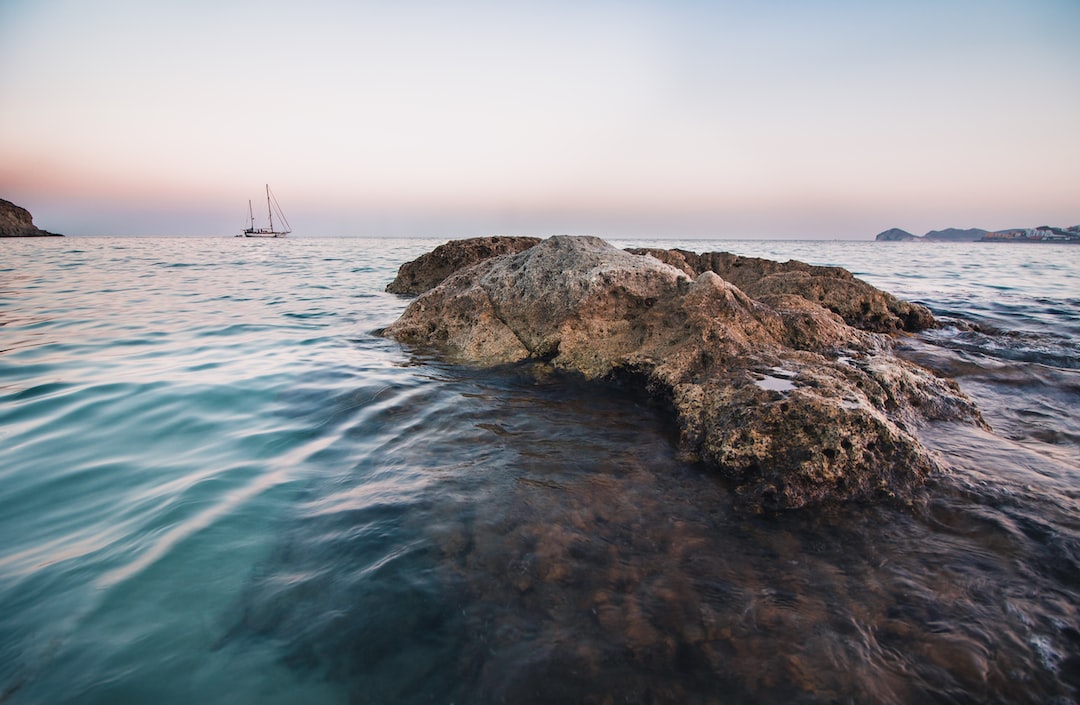
How fast is the hydrofoil racing yacht?
Hydrofoil racing yachts can achieve impressive speeds, with some models reaching over 50 knots (57.5 mph or 92.6 km/h). The F50 sailboat class, used in the SailGP series, holds the record for the fastest sailboat class, with a top speed of 52.2 knots (60 mph or 97 km/h).
What does a hydrofoil do to a boat?
A hydrofoil lifts the hull of a boat out of the water as it gains speed. This reduces the wetted area of the hull, minimizing drag and allowing the boat to achieve higher speeds. The lifting action of the hydrofoil also provides a smoother ride by reducing the impact of waves and chop.
Read more about “… Hydrofoil Catamaran: The Ultimate Guide to Foiling on Water”
How fast do hydrofoil boats go?
Hydrofoil boats can reach impressive speeds, depending on their design and purpose. Racing hydrofoil yachts can achieve speeds over 50 knots (57.5 mph or 92.6 km/h), while recreational hydrofoil boats can reach speeds of 20-30 knots (23-34.5 mph or 37-55.5 km/h) or more.
Why don’t boats use hydrofoils?
While hydrofoils offer significant advantages in terms of speed and efficiency, they also come with certain limitations. The complex design and higher costs associated with hydrofoils can be prohibitive for some boat owners. Additionally, the handling and control of hydrofoil boats require a certain level of skill and experience, making them less accessible to novice sailors.
Read more about “… Why do boats not use hydrofoils?”
Hydrofoil yachts have revolutionized the sailing experience, offering increased speed, improved efficiency, and a smoother ride. Whether you’re a competitive sailor looking for the thrill of high-speed racing or a recreational sailor seeking a more exhilarating sailing experience, hydrofoil yachts provide an exciting and innovative option.
Recommended Links:
- Hydrofoil History
- Advanced Hydrofoiling Techniques
- Hydrofoil Equipment Reviews
- How Do Hydrofoils Work on Boats? 2023
Reference Links:
- Sailing Hydrofoil – Wikipedia
- Gunboat Official Website
- Nacra Official Website
- SailGP Official Website
- America’s Cup Official Website
Now that you have a comprehensive understanding of hydrofoil yachts, it’s time to set sail and experience the thrill of foiling firsthand. Whether you’re racing on the high seas or cruising along the coast, a hydrofoil yacht will take your sailing adventures to new heights. Happy foiling!
Disclaimer: The information provided in this article is based on research and personal experience. Hydrofoiling™ is not affiliated with any specific brand or product mentioned in this article. Always consult with experts and follow safety guidelines when engaging in hydrofoil activities.
Review Team
The Popular Brands Review Team is a collective of seasoned professionals boasting an extensive and varied portfolio in the field of product evaluation. Composed of experts with specialties across a myriad of industries, the team’s collective experience spans across numerous decades, allowing them a unique depth and breadth of understanding when it comes to reviewing different brands and products.
Leaders in their respective fields, the team's expertise ranges from technology and electronics to fashion, luxury goods, outdoor and sports equipment, and even food and beverages. Their years of dedication and acute understanding of their sectors have given them an uncanny ability to discern the most subtle nuances of product design, functionality, and overall quality.
Related Posts
Can you put a hydrofoil on any board [2024] 🏄♂️.
- March 13, 2024
Is Hydrofoil Harder Than Surfing? [2024] 🏄♂️
- March 3, 2024
Are Hydrofoil Boards Hard to Ride? [2024] 🏄♂️
Leave a reply cancel reply.
Your email address will not be published. Required fields are marked *
Add Comment *
Save my name, email, and website in this browser for the next time I comment.
Post Comment
Trending now

How Do Hydrofoil Catamarans Work? (The Science Behind It Explained)

Have you ever wondered what it would be like to fly on the water? Hydrofoil catamarans are designed to do just that, and many people are amazed by the experience of gliding across the water at speeds that are unheard of with traditional boats.
But what are hydrofoil catamarans, and how do they work? In this article, well explain the science behind these revolutionary boats and explore the advantages, design considerations, and safety precautions that come with them.
Well also look at some examples of hydrofoil catamarans to show you just how powerful and advanced they are.
So, if youve ever wanted to know how these boats work and what sets them apart, read on!
Table of Contents
Short Answer
Hydrofoil catamarans work by using foil-shaped wings that protrude from the bottom of the boat, below the water line.
The foils are designed to lift the vessel out of the water, reducing the surface area touching the water, and therefore reducing drag.
As the boat moves forward, the airflow on the foils generate lift, causing the boat to rise out of the water and glide along the surface.
The foils act as an air cushion, allowing the boat to travel at higher speeds than a regular catamaran.
What are Hydrofoil Catamarans?
Hydrofoil catamarans are a type of boat that use hydrofoils to lift the hull above the water.
This reduces drag, allowing for faster and smoother sailing than traditional boats.
Hydrofoils are wings that protrude from the hull of the boat and are designed to lift the boat out of the water.
This reduces the amount of water resistance and allows the boat to travel faster.
The hydrofoils are adjustable, allowing the boat to be tuned to the desired speed.
Hydrofoil catamarans offer an efficient and fast way to travel on the water, making them a popular choice for recreational and competitive sailing.
The hydrofoils work by creating lift as the boat moves through the water.
As the boat moves, the water flow pushes against the hydrofoils and creates a pressure differential.
This pressure differential creates lift, which lifts the boat out of the water and reduces drag.
The hydrofoils also reduce the amount of wave resistance, allowing the boat to glide through the water.
The hydrofoils can be adjusted to match the speed of the vessel, allowing the boat to be optimized for maximum performance.
The angle of attack of the hydrofoils is also adjustable, allowing the boat to be tuned to the desired speed.
The fins are designed to keep the boat stable and can be adjusted to match the speed of the vessel.
In conclusion, hydrofoil catamarans are a type of boat that uses hydrofoils to lift the hull above the water.
How Do Hydrofoils Work?

Hydrofoils are a type of boat that uses a set of wings or fins to lift the hull above the water.
The hydrofoils are attached to the hull and use the water pressure to propel the boat forward.
The wings of the hydrofoils are designed to reduce the amount of wave resistance, allowing the boat to glide through the water with greater efficiency.
The wings are usually made of lightweight materials such as carbon fiber or aluminum and are designed to produce lift when the boat is moving at a certain speed.
The wings can be adjusted to different angles, which can increase or decrease the lift.
When the boat is moving, the hydrofoils create a low-pressure zone underneath the boat.
This low-pressure zone reduces the amount of drag and improves the efficiency of the boat, allowing it to move faster and more smoothly.
The hydrofoils also help to reduce the amount of wave resistance, allowing the boat to glide through the water with less effort.
They are suitable for all kinds of sailing, from racing to cruising.
Hydrofoils can be adjusted to match the speed of the vessel, making them an excellent choice for those who want to sail faster.
Hydrofoils are also a great choice for those who want to reduce their environmental impact.
Hydrofoils reduce drag, which means that they require less fuel to move the boat, resulting in lower emissions.
Hydrofoils are a great way to reduce the environmental impact of sailing while simultaneously enjoying a faster and smoother ride.
Advantages of Hydrofoil Catamarans
Hydrofoil catamarans offer a unique and efficient way to travel on the water.
The hydrofoil design reduces drag, allowing the boat to glide through the water with greater speed and stability than traditional boats.
The hydrofoils are attached to the hull and use the water pressure to propel the boat forward, creating less wave resistance than a traditional boat.
This allows the boat to move faster and smoother, while using less fuel.
Additionally, the fins can be adjusted to match the speed of the vessel, making it easier to control.
The design of the hydrofoil catamaran also allows it to ride high above the water, reducing drag and contact with the water surface.
This allows for a smoother ride, allowing the boat to move faster with less fuel consumption, and less noise and vibration.
Additionally, the hull shape of the hydrofoil catamaran is designed to increase its stability and maneuverability, further reducing drag and allowing for a faster and smoother ride.
The combination of the reduced drag, increased stability, and smoother ride makes hydrofoil catamarans a popular choice for recreational and competitive sailing.
The ability to move quickly and efficiently makes them ideal for racing, and the increased stability and maneuverability makes them well-suited for recreational activities such as sightseeing or fishing.
Additionally, the reduced contact with the water surface can help to protect the hull from damage, making the boat more durable and longer-lasting.
Overall, hydrofoil catamarans offer an efficient and fast way to travel on the water, making them a popular choice for recreational and competitive sailing.
The combination of reduced drag, increased stability, and smoother ride makes them an ideal choice for anyone looking to get the most out of their time on the water.
Factors Affecting Hydrofoil Performance

The performance of a hydrofoil catamaran depends on a variety of factors, including the type of hydrofoil, the size and shape of the hull, and the speed and direction of the wind.
The hydrofoil itself is an important factor in determining the performance of a hydrofoil catamaran.
Different types of hydrofoils offer different levels of lift, drag, and stability, so its important to choose the right hydrofoil for the job.
The size and shape of the hull also affects the performance of the hydrofoil catamaran, as the hull is the part of the boat that provides the buoyancy and helps the boat to stay afloat.
The speed and direction of the wind also affects the performance of a hydrofoil catamaran, as a headwind or tailwind can cause the boat to be pushed or pulled in a certain direction.
Finally, the weight of the vessel also affects the performance of a hydrofoil catamaran, as a heavier boat will require more lift from the hydrofoil to remain afloat.
Design Considerations for Hydrofoil Catamarans
Hydrofoil catamarans are a special type of boat that use a unique design to offer efficient and fast travel on the water.
The key component of the design is the hydrofoil, which is a fin-like structure attached to the hull that uses the water pressure to push it forward.
This reduces drag and wave resistance, resulting in a smoother, faster sailing experience than traditional boats.
When designing a hydrofoil catamaran, there are a few important considerations that engineers must take into account.
The hydrofoils must be designed so that they can be adjusted to match the speed of the vessel, as well as provide stability and reduce wave resistance.
Additionally, they must be constructed from durable materials to ensure they can stand up to the elements and provide a reliable ride.
The shape of the hull also plays an important role in the performance of a hydrofoil catamaran.
A rounded hull is ideal for reducing drag, while a flat hull is better suited for stability.
As for the size of the hydrofoils, they should be big enough to lift the boat above the water, but not so large that they create too much drag.
Finally, the placement and size of the hydrofoils must be carefully calculated to ensure the boat can reach its maximum speed while remaining stable.
It is also important to consider the weight of the boat and its passengers when designing a hydrofoil catamaran, as this will affect the performance of the hydrofoils.
By taking all of these factors into consideration, engineers can design hydrofoil catamarans that are both fast and stable, providing an enjoyable and efficient ride.
Examples of Hydrofoil Catamarans

Hydrofoil catamarans come in a variety of shapes and sizes, making them suitable for a variety of applications.
Popular examples of hydrofoil catamarans include the America’s Cup boats, the A-class catamaran, as well as the Nacra and Tornado catamarans.
The America’s Cup boats are the fastest boats in the world and are designed to achieve speeds of up to 50 knots.
The A-class catamarans are lightweight and designed for racing, while the Nacra and Tornado catamarans are designed for recreational sailing.
Each of these boats use hydrofoils to reduce drag and improve performance.
In addition to recreational and competitive sailing, hydrofoil catamarans are also used for transportation.
The Sea Eagle is a high-speed ferry that uses hydrofoils to reduce drag and increase its top speed.
The ferry is capable of carrying up to 250 passengers and can reach speeds of up to 50 knots.
Other examples of hydrofoil catamarans include the hovercraft, which uses a combination of air and water pressure to lift the vessel above the water, and the AirFish, which uses a combination of air and water pressure to fly above the water.
Hydrofoil catamarans are an efficient and fast way to travel on the water, making them popular for recreational and competitive sailing, as well as for transportation applications.
The hydrofoils reduce drag and increase performance, allowing these boats to reach speeds of up to 50 knots.
The design of the hydrofoils can also be adjusted to match the speed of the vessel, allowing for a smoother and more efficient ride.
Safety Precautions for Hydrofoil Catamarans
Hydrofoil catamarans are a popular choice for recreational and competitive sailing due to their efficiency and speed.
However, these vessels require extra caution to ensure the safety of all passengers.
Before operating a hydrofoil catamaran, it is important to understand the safety precautions needed to ensure an enjoyable and safe experience.
First, always wear a personal floatation device (PFD) when operating a hydrofoil catamaran.
This will provide a layer of protection if you fall overboard.
Additionally, if the hull of the boat is lifted above the water, it is important to check the area for any debris or objects that may be submerged.
This could cause damage to the boat or injure passengers.
It is also important to check the weather conditions before going out on a hydrofoil catamaran.
Wind, waves, and storms can all be hazardous for these vessels.
They are not suitable for rough water and should be avoided during inclement weather.
Additionally, it is important to check the engine and fuel levels before embarking on any voyage.
Finally, it is important to understand the limitations of the hydrofoil catamaran.
These vessels are designed for speed and maneuverability, not stability.
They are not intended for large groups or for carrying heavy cargo.
The hydrofoil system can also be easily damaged by impacts with rocks and other objects so it is important to be aware of your surroundings and avoid any obstacles.
By taking the proper safety precautions, you can ensure an enjoyable and safe experience while operating a hydrofoil catamaran.
Always wear a PFD, check the weather conditions, and understand the limitations of the vessel before going out on the water.
With the proper preparation, you can enjoy the speed and efficiency of a hydrofoil catamaran for many years to come.
Final Thoughts
Hydrofoil catamarans are a unique type of boat that offers an efficient, fast, and smooth sailing experience.
The hydrofoils lift the hull out of the water, reducing drag and wave resistance, allowing the boat to glide through the water.
With the right design considerations and safety precautions, hydrofoil catamarans can be an enjoyable and safe way to travel on the water.
If youre looking for a fast and efficient way to get out on the water, hydrofoil catamarans may be the perfect option for you.
James Frami
At the age of 15, he and four other friends from his neighborhood constructed their first boat. He has been sailing for almost 30 years and has a wealth of knowledge that he wants to share with others.
Recent Posts
Does Your Boat License Expire? Here's What You Need to Know
Are you a boat owner looking to stay up-to-date on your license requirements? If so, youve come to the right place! In this article, well cover everything you need to know about boat license...
How to Put Skins on Your Boat in Sea of Thieves? (Complete Guide)
There is a unique sense of pride and accomplishment when you show off a boat you customized to your exact specifications. With Sea of Thieves, you can customize your boat to make it look like your...

- FlySafe ® Foil Control
- iFLY Reviews
- Our Partners
- Distributors
Class Association
Enter your keyword.
Just enjoy high speed - foiling
” iFLY – Born to FLY “
Just enjoy foiling, ” high performance sailing “, ” we love speed “, ” join the adventure “.

iFLY15 – Technical SPECS
Length 4.63 m, 15 ft..
A Foiling Catamaran for 1-2 person(s) does not need to be any longer than this. The ancient rule that says you need length to achieve speed does not apply, as hulls do not touch the water at most times.
Width 2.50 m.
This width provides plenty of righting moment, still being road legal ato be transported in horizontal position without disassembly.
7.5 m mast / 11.2 sqm mainsail
7.5 m mast with 11.2 sqm deck-sweeper mainsail. – 8.5 m mast on iFLY RAZZOR Pro with bigger rig
Draft: 95 cm
Weight: 90 kg.
90 kg ready to sail. A very light boat, providing nonetheless excellent stability for everyday suitability.
Crew 1-2 - max.180kg
Flysafe® foil control.
T-Foils Main Foils and Rudders FlySafe automatic dynamic foil control Additional Option: Main Foil Differential >>>
Know More >>>
Different - Rig Options
LATEST DEVELOPMENT OF “DECK SWEEPING” MAINSAIL THE ROLLABLE HERU WING RIG LIGHT WIND FORESAIL «CodeF»
Full Carbon Hulls
Looking for the perfect setup for your foiling sailboat.
We can recommend the best iFLY setup and accessories for your boat. Get in touch for the ultimate sailing experience!
Performance
A great number of innovations all over the catamaran and the perfect match of all components allow controlled high-speed foiling experience. iFLY15 is full of innovations, e.g. in hull design, hydrofoils, rudders, automatic flight control system, two-layer wing trampoline, high performance rig…
HULL Design
full carbon – lightweight – performance design: Born to foil
High Performance Rig Options
LATEST DEVELOPMENT OF “DECK SWEEPING” MAINSAIL WORLD PREMIERE: THE ROLLABLE HERU WING RIG : WORLD PREMIERE: LIGHT WIND FORESAIL «CodeF». ALLOWS UPWIND FOILING (as well as other courses/points) ALREADY IN EXTREMELY LIGHT BREEZE. Know More >>>
Two Layer Trampoline
AERODYNAMIC INNOVATIVE WING TRAMPOLINE CREATING LIFT.
Full Carbon T-Foils
SCIENTIFICALLY DEVELOPED high-end foils for early take off, high speed and maximum stability.
flySafe® dynamic foil control system
The foils are controlled independently, dynamically and precisely on both sides by the flySafe® foil control system . This enables high performance sailing through stable flight. The unique foil control system of IFLY15 is a 7 years proven system developed by CEC Catamarans. Know More >>>
IFLY MAIN FOIL DIFFERENTIAL TECHNOLOGY
MDT FOIL CONTROL – iFLY rake control The sophisticated main foil differential is an active flight assistance – The Rake is adjustable while sailing. Advanced Rake Control is for the experienced, performance-oriented Catamaran sailors / pro sailors and is a feature on the iFLY RAZZOR Pro. Know More >>>
Innovations and more >>>
In the hand of the experienced sailor, iFLY15 is a high-performance racing machine. STABILITY IS NOT CONTRADICTORY TO HIGH PERFORMANCE OR SPORTINESS , on the contrary, it is a prerequisite for safe reaching and maintaining constant high speeds. Stable flight allows the sailor to concentrate on the course, on the wind, as well as on opponents and strategy – rather than permanently getting distracted by working on the foiling balance.
EARLY TAKE OFF IN WINDS AS LOW AS 2Bft. / 6 KNOTS , by combining the innovative “KickOff” foil control with a trampoline that provides boost and with the latest generation of rig and foils.
BOAT SPEEDS FAR BEYOND DOUBLE WIND SPEED CAN BE ACHIEVED . Enjoy high speed foiling with top speeds far beyond 25 knots – in ideal conditions up to 30 knots.
CONTROLLED FOILING EVEN IN THE UPPER WIND RANGE BEYOND 22KNOTS OF WIND SPEED – supported by the new FlySafe® Automatic Foil System.
FOILING PLEASURE AND PERFORMANCE ALSO IN CHOPPY WATERS
FREEDOM ! FLYING SOLO OR OPTIONAL WITH CREW . You have the choice. No manhunt for crew. But still enjoy the opportunity of taking a friend or family to fly with you. Up to 140kg of crew weight. (To keep the boat and especially the mast light, we specified the iFLY15 components intentionally not for double trapeze.)
NO HOISTING AND LOWERING OF DAGGERBOARDS while sailing. (Only for beaching or in shallow waters.)
FREEDOM TO SWITCH BETWEEN FLYING MODE OR SAILING AS A CONVENTIONAL CATAMARAN (with at least the leeward hull touching the water). Within seconds iFLY15 can be switched to Non-Flight mode, even while sailing. In that mode, iFLY15 will not take off, but the foils will still create lift and give an extra agile sailing behavior, which is on the same time very stable as rudder Foils will avoid pitch poling. Non-Flight mode is providing additional security in extreme high wind speeds. It is also useful for less experienced sailors or in all situations, where taking off is undesirable (e.g. in the harbor or while towing…).
EASY TO LEARN FLYING BY AVERAGE SKILLED AND TRAINED SAILORS
EASY BEACHING AND SLIPPING , as simple as with any conventional beach catamaran by using a standard catamaran beach trolley. Foils remain flat under the keel, with the daggerboard lifted as on a conventional catamaran.
SIMPLE TO DISASSEMBLE PLATFORM . Width of 2.50m is also road legal in most countries for horizontal transport without disassembly.
DAGGERBOARDS CAN BE PLUGGED IN FROM ABOVE and Foils securely anchored from below with one central screw.
FAST SET-UP OF THE iFLY15 FROM ROAD TRAILER TO SAILING . Simple rigging the mast, no genacker boom, no foresail, no spi.
SILENT AND CALM PLANING ABOVE THE WAVES . Flight height of up to 90cm, avoiding even high waves below.
EASY TO FOIL THE JIBE (without landing). Stable maneuvers are made easier by the fact that the four T-Foils always remain in the water.
« INTERNATIONAL FORMULA 15 FOIL » Class Association. The new development class for FOILING, SINGLE HANDED on MULTIHULLS. Multi manufacturer class in the tradition of a Formula18, A-Class or international Moth. Enables large regatta fields and evolution of the boats, following the technical progress (which is especially essential in the case in Foiling). Strict regulations to avoid uncontrolled exaggerated development.
Contact : [email protected]
Catamaran Europe Central
The iflysail team, is looking forward to your message, more to know about ifly foiling , interesting tech, high performance rig options >>>, flysafe® dynamic foil control system >>>, ifly main foil differential technology >>>.
MDT FOIL CONTROL – iFLY rake control
News and More
Ifly foiling experience >>>, press articles >>>, events >>>.

- Green Propulsion
- Renewable Energy
- Energy efficiency
- Sustainable materials
- News & Events
- Sunreef News Magazine
- Press About Sunreef

- 60 Sunreef Power
- 70 Sunreef Power
- 80 Sunreef Power
- 100 Sunreef Power
- Sunreef Supreme Power
- Sunreef Ultima Range
- Sunreef 44 Ultima
- Sunreef 55 Ultima
- Sunreef 66 Ultima
- Sunreef 77 Ultima
- Sunreef 88 Ultima
- Sunreef fleet

- Sunreef Zero Cat
- Sunreef 100 Eco
- Sunreef Fleet

- Sunreef 43M
- 49M Sunreef Power
- 210 Sunreef Power Trimaran
- Sunreef Explorer
- 40M Sunreef Explorer
- 40M Sunreef Explorer Eco
- 50M Sunreef Explorer
- Superyachts Fleet
Sunreef Yachts Presents the World First Hydrofoil System for Luxury Open Catamarans

Catamarans offer several specific features that make them a perfect alternative for traditional yachts, e.g. a bigger living space (sometimes even twice as big as on a single-hull vessel), excellent stability and a very long cruising range. However, enthusiasts of motor vessels choose catamarans primarily for their high performance.
In order to meet needs and expectations of our customers, Sunreef’s naval architects team decided to develop a system of retractable hydrofoils that will enable luxurious Sunreef vessels to attain a maximum speed up to 70 knots and literally fly over the surface of water. Such a solution is the best choice for all those who want to fully exploit the potential offered by power boats.
Hydrofoils in catamarans are used to reduce drag that directly affects the speed of a vessel. A vessel fitted with hydrofoils is lifted out of the water which significantly decreases drag, consequently allowing for greater speeds. Additionally, due to excellent stability of catamarans (ensured by two independent hulls), a vessel is adequately balanced without the need to employ complicated stabilizing systems. As a result, both helmsmen and passengers are offered the ultimate comfort and safety even at considerable speeds (such a combination is not possible in case of standard single-hull vessels).
The first model fitted with hydrofoils will be the Sunreef 40 H – a 40-feet motor catamaran of an open type. A specialist in luxurious, custom-made, multi-hull vessels, the Sunreef Yachts shipyard is going to present a perfectly finished catamaran with sleek, sporty silhouette that will be the ideal choice for everyone who values perfect design and top performance.

Previous Post Sunreef Yachts Announces Its Presence at the Monaco Yacht Show 2014
Next post sunreef yachts presents the new sunreef 74 sailing catamaran.
Comments are closed.
SUBSCRIBE TO OUR NEWSLETTER
- Sailing Yachts
- Power Yachts
- Superyachts
- Making a Change
- Green Concept
- Energy Efficiency
- Sustainable Materials
- ECO Q&A
Copyright © 2024 Sunreef Yachts . All rights reserved.
- Whistleblowing
- Privacy Policy

Sunreef Venture S.A.
Sunreef Yachts Shipyard
ul. Tarcice 6
80-718 Gdańsk, Poland
+48 58 769 77 77

Ready to get started?

Designed with a singular vision...To deliver unmatched performance and efficiency!
Introducing the insetta 35ifc – the bar has been raised.
The Insetta 35IFC was designed with a singular vision… to be the best-performing center console sport fishing catamaran in its class. Enjoy unmatched performance, range, and efficiency thanks to the 35IFC’s hydrofoil-assisted design.
In addition to being the best High-Performance Fishing Catamaran in its class, it also provides a smoother and dryer ride in the rough stuff!
This boat was designed for people who fish, by people who fish! From its integrated livewells to its cavernous coffin boxes, level open deck layout, massive insulated storage and so much more, this boat was designed for maximum range and fishability!
Here’s what our customers have to say: “Holy crap do I love my 35 IFC with the Merc 300 V8’s on the back. We ran her down to Key Largo the other day, snorkeled all day, got lunch at Shipwrecks Bar and Grill, and ran back. Cruised between 40 and 45 mph, mostly around 42. So smooth it’s nuts. Burned maaaayyybe 40 gallons for the whole day. As we cruised the dashboard was telling us between 1.7 and 1.8 mpg, but I’m pretty sure we cruised more than 40 miles and burned between 35 and 40 gallons, no more. So… suffice it to say that you guys have absolutely crushed it and changed the game here. Fantastic work”! – Alan, Hull #4
Check out our FAQ’s section below for more about the Insetta 35 with IFC!
Specifications
Length Overall
Maximum Beam
Maximum Draft
Fuel Capacity
Cruise Speed
Cruise Miles Per Gallon (MPG)
Over 850 miles*
Cruise Range
Standard Features
Standard “Insetta White” Gelcoat Molded in Diamond Non-Skid Tackle Storage Stbd Side Tackle Storage Port Side 19 Gallon Freshwater Washdown/Shower 5 x In Deck Storage Hatch 2 x In Deck Macerated Fish Boxes 625 Qt Insulated Coffin Box, Split Boxes Walk through Transom Access (Door Optional) Two 36 gallon Integrated Transom Livewells Fresh and Raw Water Washdown 34 Rod Holders (gunnels and coffin box) 7 Stainless Gemlux Pull-Up Cleats LED Navigation Lights Boarding Ladder
Recessed Stainless Bow Rail
Helm / Console
Fiberglass Hardtop with Powder Coated Aluminum Supports Tempered Safety Glass Enclosure for Console 6 Integral Rod Holders Built into Rear Support Molded Fiberglass Leaning Post with Rear Face Seating and cooler 3 Wide Helm Seats 6 S/S Cup Holders Storage Box and Rigging Tray on Rear Facing Seat Storage Drawers Under Helm Seats 165 Qt Leaning Post Ice Box Located Under Rear Face Seats
Base Upholstery
Equipment and Electronics
3 Part Internal Foil System
3 Pump Capacity Sea Chest with Dual Livewell Pumps & Raw Water Feed
4 1100 GPH Bilge Pumps (2 in Each Sponson)
Standard Capacities
490 gallon fuel capacity.
625 Qt Insulated Coffin Box with Divider
165 Qt Leaning Post Ice box
Dual 36 Gallon Livewells
19 Gallon Freshwater
Frequently Asked Questions
IFC is Insetta Boatwork's Internal Foiling System.
You can expect a significant increase in cruise speed; Improved handling and stability in rough conditions; Better acceleration; A boat that is less affected by increased payload; A 20-40% increase in fuel efficiency; and a 20-40% further cruise range! Additionally, the IFC technology will also provide a drier ride in choppy conditions and Provide for more responsiveness when turning at speed!
The system is a fixed setup, there is nothing to operate and there are zero moving parts.
The IFC Technology in effect smooths out rough seas by allowing the boat to run from wave crest to wave crest at a relatively smooth and stable attitude. The IFC System creates lift which help to in effect “Carry” the hull higher in the water. The system acts as a set of wings carrying the boat at speed, keeping the hull from having to follow each wave across its entire contour. In other words the surface of the waves have less effect on the hull as the IFC system is lifting the boat. Additionally, the aerodynamic lift created by the catamaran hulls creates even more lift at the bow of the boat, keeping the nose high and preventing the “slamming” or sneezing found in other catamaran hulls.
No, you don’t. The foils are flush mounted to the bottom of the keels of each sponson (as well as up in the tunnel.) At its centerline the main foil of the IFC system is only slightly lower than the keel line. The boat will easily load onto a standard catamaran trailer. There is no big contraption hanging way down under the boat.
Remember, the foils are INTERNAL to the tunnel. At its lowest point the main foil is only slightly lower than the hull and is higher than the props. Because of this the odds of striking the foils are extremely low. The boat is designed to be lifted by the foil. The structural integrity of the foil system is such that the weight of the boat could be supported many times over by the foil. As such, if you did somehow manage to strike the foil on something EXTREMELY SUBSTANTIAL, like a stone shoal, the likely outcome is that you may (in a very worst case scenario) bend or break a foil wing. If that were to happen, you could still operate the boat to port with the remaining foils. The IFC foils are made from a very high-grade stainless steel and designed to meet or exceed relevant guidelines for impact and strength.
As water travels through the tunnel and around the foil, a tremendous vortex is created. This force keeps most debris from being trapped in the tunnel or around the foil. Between the pressure of the air moving through the tunnel, and the vortex created in the water, the tunnel and foils will stay clean and clear.
The outboards of the 35 IFC are mounted on a slight outward angle to place the propellers properly to maximize the thrust and flow efficiency created as the water travels through the tunnel and around the foils. This mounting also helps the boat to lean into a corner, much like a monohull.
Firstly, we’d ask, “Why would you want to?” But the short answer is no. IFC is an integrated system that is integral to the design of the boat.
The short answer is that boats with technology similar to IFC have been in use for many years, but not in the recreational market. Commercial and Military applications are quite prevalent. The initial design of a hull and system like this is quite complex and can be cost prohibitive. We at Insetta feel the gains in efficiency, speed, range and ride quality far outweigh the initial design and build cost.
Upon deciding to build a foiling Cat, Insetta assembled a team of naval Architects and Marine Engineers to refine an existing and proven design. Using their own state of the art construction techniques, Insetta brought an application specific version to the fiberglass Center Console market.
Optional Features
Customizable Garmin or Simrad Electronics JL Audio 10 Speaker Stereo System Flush Mount Acrylic Helm Bow Shade Custom Gelcoat or Combination of Colors Deluxe Upholstery Third Center Livewell Under Rear Facing Seat 40 gallon Seadek Flooring or Flexiteek Decking Additional Gunnel Rod Holders (18 standard) Recessed Wireless Phone Chargers Swivel Base Rod Holders Outlets for Electric Reels Additional Drink Holders on Leaning Post, Coffin Box, Gunnels and Helm Forward/Rear/Side Spreader Lights T-Top Outrigger Bases/Poles Gemlux Electric Head With 19 Gallon Blackwater Holding Tank Freshwater Sink and Vanity Inside Console Underwater Lights Heavy Duty Dive Ladder LED Under Gunnel Lighting On-Board Battery Charger Windlass Custom Aluminum Trailer Cockpit Table/Bow Table
Why did Insetta Boatworks decide to build a boat with IFC?
For decades, Hydrofoil power boats have proven to be the most efficient craft for a variety of offshore operations.
While pursuing a B.S. in physics in 1960, Victor Insetta was employed doing anti-submarine research that utilized high speed Deep-V patrol boats equipped with hydrofoils. Their ability to pursue submarines at high speed, operate safely offshore, and, being foil borne: allowed their hull to run clear of the water avoiding direct hits from torpedoes. Decades later, Vic and his family rode comfortably on hydrofoil ferries in Italy, flying over white capped waves in the bay of Naples.
In 2017, The Insetta 45 was chosen to be the official chase boat of the America’s cup! Four 45’ Insetta’s catamarans were shipped to Bermuda to assist at various cup events. Sailboats, competing from several countries, were catamarans with hydrofoils ! The Insetta 45’s ran parallel to these “foiling sail cats” to assist with TV coverage. The sailing cats were traveling at speeds approaching 50 mph, 2 ½ times the wind speed . Efficient … you bet . They could also turn on a dime at over 40 mph…
It became obvious: that a foiling cat would make a great offshore outboard power boat… Many foil power boat designs in the past, had wide foils that stuck out the sides, increasing their beam and draft. It made them difficult to dock, and they couldn’t operate in shallow waters. Joel Shine (chief operating officer) of Insetta Boatworks found a catamaran design that had hydrofoils mounted in the tunnel, (that location between the tunnel walls actually improves their efficiency), and does not add to its draft. Further improvements could be added by using our ultra-light high strength infused composite construction.
Joel, Vic and our technical staff reviewed the foiling cat’s initial specifications and performance data, and then sea trialed two foiling cats with internal hydrofoils. Our staff includes a second physicist and pilot… Glen Dobbs. We are all active boaters and we determined we would build our version of a foiling outboard powered cat. We contacted a Naval architect, who designed several successful foiling power cats . He is now a member of our technical staff.
Our 35 “foiling cat” design has set the standard for Foil-Assisted Sportfishing boats. The hull, foils, materials, and engines are synergistically combined, to provide: unrivaled high-speed cruising efficiency , and provide safe offshore handling, with unimpeded shallow water operation, including beaching, without foils or props contacting the bottom.
Insetta 35IFC
The premier internal foiling catamaran.

Integrated 36 Gallon Livewells & 625 QT Coffin Box Standard
Designed to fish.

850+ Mile Range!

Best in Class MPG, Smoother/Dryer Ride!
Performance.
Click the button below to contact or email us for more info!
Latest News

The Foiling Press – September 2023
The Foiling Press – September 2023 – September was an awesome month! We’ve wrapped up a successful…

The Foiling Press – August 2023
The Foiling Press – August 2023 – August was an interesting month for…

The Foiling Press – July 2023
The Foiling Press – July 2023 – July was a great month for the Insetta Boatworks team and…

The Foiling Press – June 2023
The Foiling Press – June 2023 – It’s officially summer, and that means…

2023 Insetta 35IFC (SOLD)
If you’ve been wanting to get into a 35IFC without the wait, this is your chance! Even…

The Foiling Press – February 2024
The Foiling Press – February 2024 – February was a busy month for…


The Foiling Press – January 2024
We kicked off the year with a full house here at Insetta Boatworks! Three beautiful 35IFC’s in…
Get the Latest Insetta News!
- First Name *
- Last Name *
Share this page

Looking for our latest catalog?

Discover the Magic of Hydrofoil Sailboats

Last Updated by
Daniel Wade
December 11, 2023
Key Takeaways
- Hydrofoil sailboats blend speed, stability, and innovation for a fun sailing experience.
- Their design lifts the hull above water, reducing drag and enabling high-speed travel.
- Advanced control mechanisms maintain stability in varying wind conditions.
- Sails and hulls are meticulously engineered for optimal aerodynamics and lift.
- Ongoing innovations in foil technology continue to propel hydrofoils to new heights.
Based on their innovation and nature, the world of hydrofoil sailboats are magical, to say the least. But what exactly makes them so exceptional?
The magic of hydrofoil sailboats lies in their extraordinary speed. They can achieve remarkable speeds that were once thought impossible for sailboats. Their unrivaled stability and cutting-edge technology redefine sailing, offering a thrilling blend of innovation and performance.
Over the years, I've dedicated myself to mastering the intricacies of the yachting world, not just as an observer but as an active participant in the hydrofoil sailing community. My knowledge extends beyond the surface, encompassing the technical aspects of hydrofoil design and the thrill of high-speed sailing. As such, I’ll provide a comprehensive and engaging exploration of what sets hydrofoil sailboats apart, making them truly magical on the waters.
Table of contents
Discover the Magic of Hydrofoil Sailboats
Hydrofoils saw their early development as a concept for enhancing speed and efficiency on the water. From Alexander Graham Bell's experiments to the application of foils on sailboats in the 1950s, the quest has always been for greater speed.
But it wasn't until Russell Long championed these designs with the CEC foiling catamaran and the development of the Hobie Trifoiler that hydrofoils began to carve a distinct niche in the sailing world.
This sailboat operates on a simple yet ingenious principle: as the speed increases, the foils submerged beneath the boat generate lift. This lift thrusts the boat's hull above the water, dramatically reducing drag.
It’s similar to how air flows around the wing of an airplane, only with water's denser environment offering a different dynamic. This revolutionary foiling system allows boats to glide over waves, offering an incredibly smooth ride.
The variety of hydrofoil sailboats is astounding, from the foiling catamarans that have revolutionized the America's Cup to the twin sail trimaran designs. The fastest production sailboat, the Hobie Trifoiler , showcases what hydrofoils are capable of.
Additionally, boats like the innovative Emirates Team New Zealand vessels continue to push the boundaries of technology in competitive sailing. Whether for recreational purposes or high-speed racing, the range of hydrofoil sailboats caters to different sailing experiences and preferences.
Now, let’s explore the various aspects of hydrofoil sailboats that make them truly magical.
The Thrills of Hydrofoil Sailing
When I first stepped onto a hydrofoil sailboat, I knew that sailing would never be the same for me. Harnessing the power of the wind to achieve remarkable speeds while hovering above the water was nothing short of revolutionary.
It's an adrenaline-infused blend of sailing, flying, and innovation that promises high performance and stability with a significant reduction in wetted areas.
The allure of hydrofoiling is not just about the speed; it's the sensation of flying over the waves, defying the conventions of traditional sailing. With each gust, my hydrofoil sailboat becomes a silent, swift car, slicing through the air rather than merely sailing on the water.
When sailing with hydrofoils, you get to experience the following benefits.
- High Speed: With hydrofoils, I've seen and achieved speeds I never thought possible on water.
- Less Wetted Area: As the hydrofoils lift the hull out of the water, drag is reduced, further contributing to the craft's efficiency and speed.
- Stability: Surprisingly, the flying sensation is accompanied by stability once airborne, making the ride smoother.
The America’s Cup Competitive Foiling
Over the years, I've witnessed first-hand how hydrofoil technology has radically altered the landscape of competitive sailing. The introduction of hydrofoils has not only redefined what we consider possible in the sail area but has also brought a fresh surge of excitement to the racing circuit.
The most illustrious event in sailing, the America's Cup , underwent a transformation with the embrace of hydrofoils. Emirates Team New Zealand, a frontrunner in hydrofoil innovation, redefined the America's Cup racing in 2017.
Alongside them, the US team and Luna Rossa played pivotal roles in reshaping the landscape of America's Cup racing.
With their AC50 class catamarans soaring above the waves at top speeds that defy traditional sailing limits, they clinched the title and shifted the focus of competitive racing toward technological prowess.
The spectacle of these vessels racing is not just about the crew's capabilities but equally a testament to engineering marvels.
Also, the advent of hydrofoils in racing has certainly led to a spike in performance metrics. Here's a concise table highlighting the before and after impact of hydrofoiling in competitive Sailing:
This table illustrates just how much the racing landscape has shifted; it's not only sailing anymore.
It’s similar to piloting a high-speed aircraft, with each crew member playing a crucial role in harnessing the raw power of the strong winds in harmony with state-of-the-art technology. Watch this video for a more detailed explanation of hydrofoil sailboats and their magical power.
Technical Aspects of Hydrofoil Sailboats
In diving into the technical aspects of hydrofoil sailboats, I'll give you an insight into the intricate designs that enable these marvels to glide above the water, as well as the cutting-edge foil technology propelling them.
The design of a hydrofoil sailboat revolves around its capability to elevate the hull above the water, reducing drag and enabling high wind-speed travel. Control mechanisms are central in maintaining stability, especially when the sailboat interacts with varying wind conditions or maneuvers through shallow waters.
The hull's length and overall design are calibrated for balancing aerodynamics with hydrodynamics. In designing sails and hulls for foiling, one must carefully balance the need for power with the propensity for lift.
The sails are tailored not only to harness the wind's energy effectively but also to match the unique mechanics of a vessel in flight. Meticulous engineering ensures that the sail configuration works in harmony with the foils to propel the sailboat forward swiftly.
Additionally, the foil technology, which is pivotal to modern hydrofoils, has undergone significant further development over the years . From the materials used to the manufacturing processes, every element incorporates the latest in technology to yield extreme performance.
Advancements have led to foils that can automatically adjust to sailing conditions and speed, which is instrumental for achieving and maintaining high speeds.
Currently, the future of hydrofoil technology seems bound for even further breakthroughs. Customization and refinement of foils for specific water conditions, such as the challenges posed by shallow water, are ongoing.
Each new iteration builds upon the last, consistently advancing the field and informing the next leap in hydrofoil sailing. This persistent innovation in foil and hull technology is a testament to the potential that lies ahead for hydrofoil sailboats.
Are Hydrofoil Sailboats the Right Options for You?
Hydrofoil sailboats offer a unique and thrilling sailing experience, but whether they are the right option depends on your preferences and goals. These high-performance vessels are known for their exceptional speed and stability, making them ideal for thrill-seekers and competitive sailors.
If you're passionate about cutting-edge technology and want to push the boundaries of traditional sailing, hydrofoil sailboats could be a perfect fit.
However, they may require a learning curve for beginners and are typically more expensive than traditional sailboats.
Consider your skill level, budget, and desire for speed and innovation when deciding if hydrofoil sailboats align with your sailing aspirations.
The Future of Hydrofoil Sailboats and Their Transformative Potential
Over the years, I've been captivated by the evolution of sailing and the recent advancements in hydrofoil technology, which promise a thrilling future for these marine crafts.
The technology supporting hydrofoil sailboats is rapidly advancing, bringing us closer to a world where boats gliding above the water's surface is a common sight.
These boats use 'wings' or foils submerged in water to lift the hull above the surface, reducing drag and allowing for greater speeds. This innovation is not just limited to racing but is expected to influence recreational and transport vessels in the future.
Today, we see hydrofoils in action with hydrofoil kiteboards, which have become popular among thrill-seekers. This is due to their ability to harness wind power and achieve impressive acceleration and agility on the water. This same principle is being applied to larger sailing vessels, where performance and sustainability converge.
The further development of hydrofoil technology involves intensive research into materials and design optimizations that can handle the challenges of varied sea conditions.
Electric and solar-powered hydrofoils are on the horizon, poised to significantly impact our world by offering greener alternatives to traditional boats.
Notably, the trends in hydrofoiling indicate a shift towards more sustainable sailing, utilizing advancements in electric propulsion systems to complement the inherent energy efficiency of hydrofoil designs.
The goal is a fleet of sailboats that are not just faster but more eco-friendly, promising an exciting future where the joy of sailing is in harmony with the health of our oceans.
Related Articles
I've personally had thousands of questions about sailing and sailboats over the years. As I learn and experience sailing, and the community, I share the answers that work and make sense to me, here on Life of Sailing.
by this author
Learn About Sailboats
Most Recent

Affordable Sailboats You Can Build at Home
September 13, 2023

Best Small Sailboat Ornaments
September 12, 2023
Important Legal Info
Lifeofsailing.com is a participant in the Amazon Services LLC Associates Program, an affiliate advertising program designed to provide a means for sites to earn advertising fees by advertising and linking to Amazon. This site also participates in other affiliate programs and is compensated for referring traffic and business to these companies.
Similar Posts

Hunter Sailboats: Are They Built for Bluewater Cruising?
August 29, 2023

What Is A Furler On A Sailboat?
August 22, 2023

What Is Sail Roach?
August 15, 2023
Popular Posts

Best Liveaboard Catamaran Sailboats
December 28, 2023

Can a Novice Sail Around the World?
Elizabeth O'Malley
June 15, 2022

4 Best Electric Outboard Motors

How Long Did It Take The Vikings To Sail To England?

10 Best Sailboat Brands (And Why)
December 20, 2023

7 Best Places To Liveaboard A Sailboat
Get the best sailing content.
Top Rated Posts
Lifeofsailing.com is a participant in the Amazon Services LLC Associates Program, an affiliate advertising program designed to provide a means for sites to earn advertising fees by advertising and linking to Amazon. This site also participates in other affiliate programs and is compensated for referring traffic and business to these companies. (866) 342-SAIL
© 2024 Life of Sailing Email: [email protected] Address: 11816 Inwood Rd #3024 Dallas, TX 75244 Disclaimer Privacy Policy
- BOAT OF THE YEAR
- Newsletters
- Sailboat Reviews
- Boating Safety
- Sailing Totem
- Charter Resources
- Destinations
- Galley Recipes
- Living Aboard
- Sails and Rigging
- Maintenance
- Best Marine Electronics & Technology

Hydrofoils for Sailboats
- By By Steven Callahan
- Updated: July 29, 2020
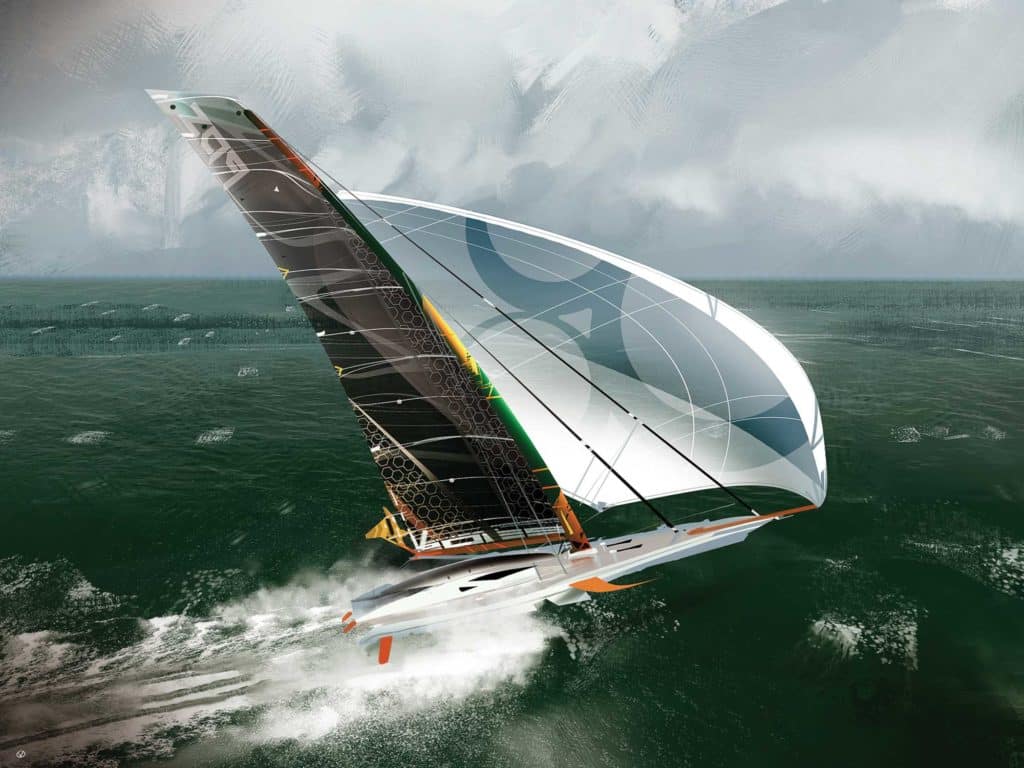
Hydrofoils have been providing dynamic lift since fish sprouted fins. And people have been employing foils ever since they first put paddle to water, and certainly since adding keels and rudders to boats. But the modern, flying America’s Cup boats, kiteboards, Moth dinghies, shorthanded offshore thoroughbreds—these are all playing in a new world in which the terms “hydrofoils” or “lifting foils” describe those oriented to raise a hull or hulls from the water. In these racing realms, if you ain’t got foils, you ain’t got nothin’.
Lifting foils that allow these boats to sometimes home in on three times the wind speed might appear to be of little interest to cruising sailors, but with such common cruising features as self-steering and autopilots, self-tailing winches, rope clutches, fin keels and faster hull shapes all having been passed down from the racing scene, one must ask, “What promise, if any, do hydrofoils hold?”
Lifted or partially lifted boat patents extend back to 1869, but workable watercraft took roots along with early flight. Italian Enrico Forlanini began experimenting with foils in 1898. In 1906, his 1-ton 60 hp foiler reached 42.5 mph. Alexander Graham Bell’s HD-4 Hydrodrome flew on Bras d’ Or Lake at 70 mph in 1919. And several sailing foiler patents began appearing in the 1950s. Notably, JG Baker’s 26-foot monohull, Monitor, flew at 30-plus mph in 1955. Baker experimented with a number of foil configurations, and at least built, if not used, the first wing mast. The first offshore foiler was likely David Keiper’s flying trimaran, Williwaw , in which he crisscrossed the Pacific in the 1960s.
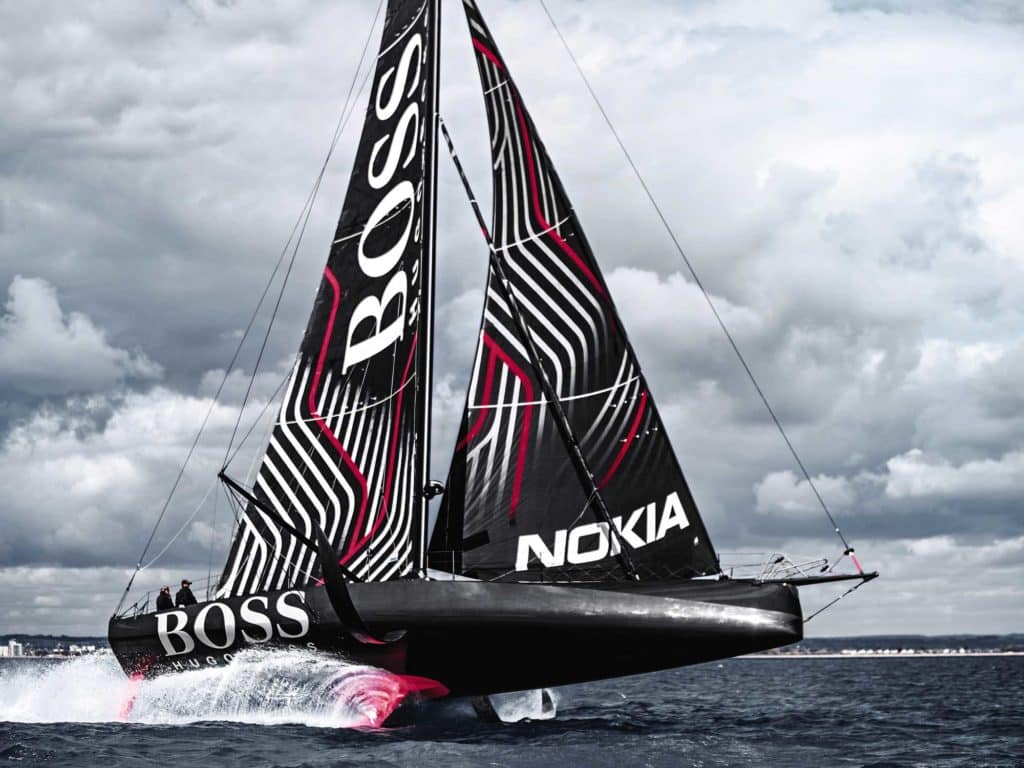
By the 1980s, numerous speed-trial and foil-enhanced offshore-racing multihulls showed huge promise, and have since evolved into behemoth trimarans clocking 30 to 40 knots continuously for long periods, not to mention the monohulls in the Vendée Globe (and soon the Ocean Race) that are capable of speeds exceeding 30 knots. But as boat designer Rodger Martin once reminded me, “If you want a new idea, look in an old book.” He was right. The fully foiling monohulls that will compete in the 2021 America’s Cup will bring things back full circle to the foiling monohull Monitor .
Fluid Dynamics Primer
Any foil—a wing, sail, keel, rudder or lifting foil—redirects the flow of fluid (air included), creating high- and low-pressure areas on opposite sides of the appendage, while developing lift perpendicular to the foil’s surface.
Advancements in foiling science is due in part to the hundreds of foil shapes that were tested, with tabulated results, by the National Advisory Committee for Aeronautics, the forerunner of the National Aeronautics and Space Administration. For the better part of a century now, aircraft and boat designers have been able to choose from a spectrum of refined foil sections that produce predictable amounts of lift and drag for known speeds of fluid and angles of attack, or the angle at which the foil passes through the fluid. Sections of efficient faster foils, as seen on jets or as we flatten our sails to go upwind or reach high speeds, have smaller nose radii and are thinner, with the thickest section of the foils farther aft, up to nearly halfway toward the trailing edge.
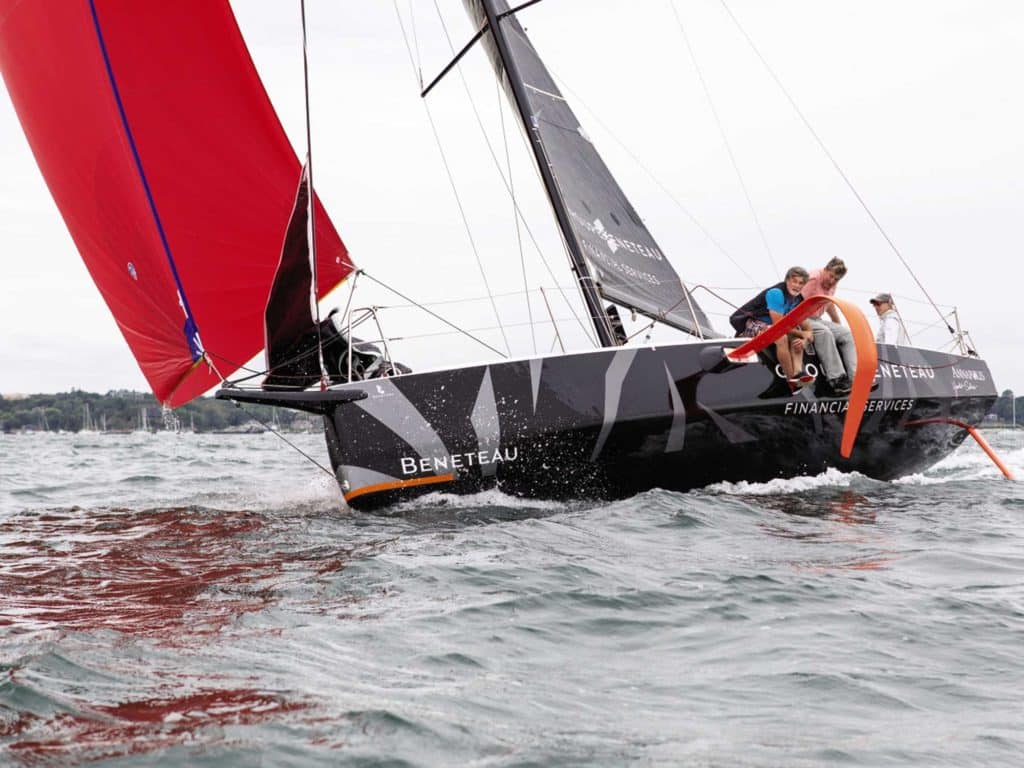
The most efficient foil sections at slow speeds are fatter, with the maximum thickness farther forward, and with larger nose radii, than faster foils. The angle to fluid flow or angle of attack also is greater. We see these slower foils on wings of prop planes and sails when off the wind or in light conditions.
Most sailors are familiar with traditional foils on boats, the teardrop sections of keels that produce lift to weather, reducing leeway, and of rudders, allowing them to steer. Even a flat plate can be a foil, but these tend to be inefficient. Such a shape is prone to fluid separation from the surface, meaning they stall easily, and they maintain poor lift-to-drag ratios. Even keels and rudders are somewhat lift-compromised because they are symmetrical and have to work with fluid coming from either side, whereas lifting foils are more like aircraft wings or propellers, with asymmetrical sections honed for performance in a more stable, fluid flow.
The point is, any foil can be employed at various angles to the surface to prevent leeway, produce increased stability, or help lift the boat out of the water. But those not required to work with fluid flowing from opposite sides can then be honed to maximize lift and minimize drag. Asymmetrical foils were used on boats like Bruce King’s bilgeboarders, including Hawkeye , back in the 1970s. And, designers, including Olin Stephens, had previously employed trim tabs behind keels to improve keel performance.
Sails, which are heeled airfoils, not only drive the boat forward, but they also produce downforce, actually increasing the dynamic displacement of the boat. To counter this and keep the boat sailing more upright, multihull designer Dick Newick first employed slanted asymmetrical hydrofoils in the outer hulls of his small charter trimaran, Lark , in 1962. A portion of the lift developed by the hydrofoil resisted leeway, while a portion worked to actually lift the leeward hull, keeping the boat more upright and reducing dynamic displacement and drag.
Anyone who has ridden on even a foil-stabilized boat will know how riding at least lightly on the waves, and especially above them, beats smashing through them. When boats lift off, everything gets a lot smoother, drag falls away, and the boat accelerates.
Cruising on Foils
But why would a cruiser want to whip over the sea? Wouldn’t this demand an inordinate amount of attention by the crew? Would lifting foils even be applicable to a boat that must have substantial displacement to carry crew and stores? Aren’t cruising-boat hydrofoils an oxymoron?
Maybe, but I believe our boats’ hulls are likely to sprout fins much as fish have as we orient foils to more efficiently resist leeway, add stability, aid steering, reduce drag, increase comfort, allow for shallower draft, and enhance wider variations in hull shapes.
Boats have gotten increasingly wide through the years to advance form stability, improve performance (primarily off the wind), and boost interior volume. But the downside is that fat boats tend to slam more upwind. What if you could reduce dynamic displacement of the boat and lift that hull even partially from the water? The result would be less slamming, especially upwind.
At the same time, what about narrower boats that are known for being more seakindly, especially when closehauled, but lack form stability to carry adequate sail area for powering upwind, and tend to roll badly downwind? Or shallow-draft vessels that are lovely for cruising, but again, tend to suffer from reduced stability? Foils can give that stability back.
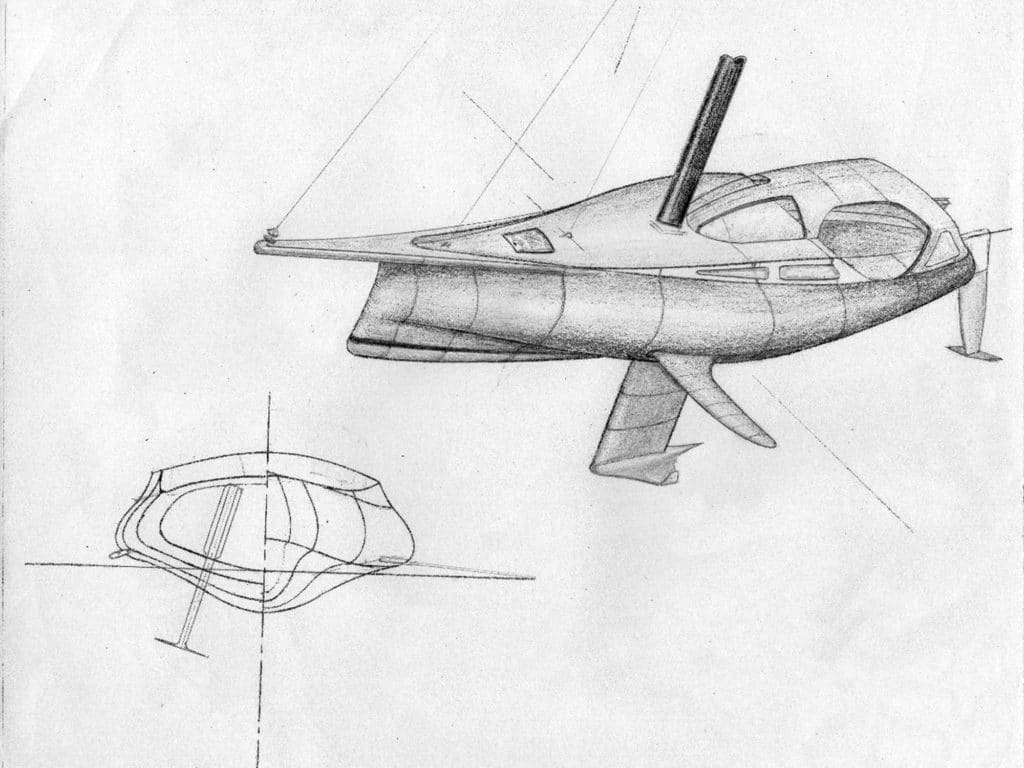
Looking ahead, boat designers might choose to reduce ballast, making up for it with a foil. In short, lifting foils can reduce boat drag and motion while increasing power and performance.
Pitching also does no favors for speed or crew comfort. Foils can come into play here as well. Foils parallel to the sea’s surface resist motion up and down, and a lifted boat skating above chop also is less prone to hobby-horsing through waves. Multihulls have always been particularly susceptible to pitching for a number of reasons, but watching videos of multihulls sailing to weather show an obvious huge advantage that foilers have compared with nonfoilers. Offshore multihulls now routinely employ T-foils on the rudders to control the fore and aft angles of the boat (attitude), a feature easily adaptable to any vessel.
OK, so what’s the cost? Obviously, the more things sticking through the hull, especially if they are retractable, the more it’s going to impact the interior. There would be added weight, complexity and cost. Foils also create noise, and there’s susceptibility to damage from hitting stuff. And let’s not forget compromises with shapes, purposes and things not yet imagined.
As for damage, it’s possible to fold the foils back into the hull. Think swinging center- boards or actual fish fins. Daggerboardlike foils can at least employ shock-absorbing systems similar to the daggerboard arrangements found in many multihulls. This includes weak links that are outside the hull, so if a foil is struck, it frees the foil to fold back or to come off before being destroyed or damaging the hull. Or, foils might hang from the deck rather than penetrating the hull, allowing them to kick up (and to be retrofitted to existing boats). These configurations also relieve the interior of intrusions, and keep the noise more removed from it. I have no doubt that numerous talented designers will be exploring all kinds of options and compromises in coming years, finding ways to make foils both practical and more than worth the compromises.
Sailing more upright, shallower draft, speed, comfort—what’s not to like? Just what is possible? I have a feeling the cruising community is about to find out.
Steven Callahan is a multihull aficionado, boat designer and the author of Adrift , an account of his 76 days spent in a life raft across the Atlantic.
- More: foils , How To , hydrofoils , print june july 2020 , sailboat design
- More How To

3 Clutch Sails For Peak Performance

It’s Time to Rethink Your Ditch Kit

8 Ways to Prevent Seasickness

How To De-Winterize Your Diesel Engine

Bitter End Expands Watersports Program
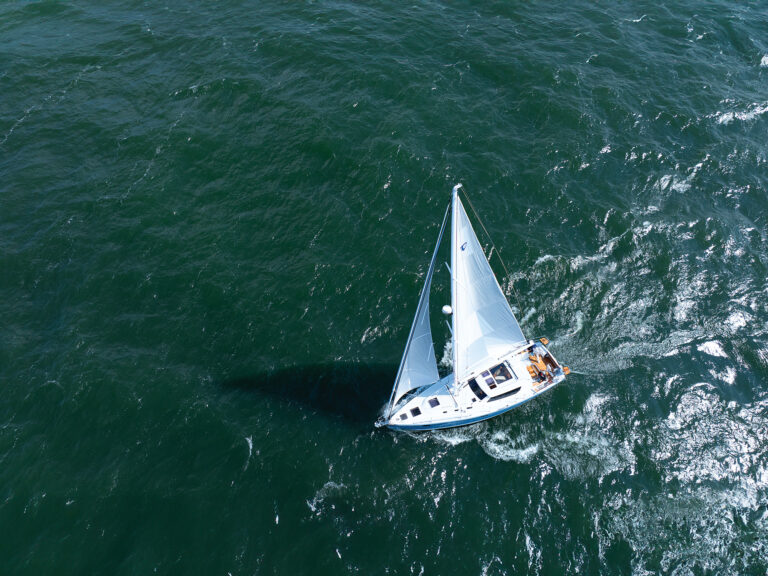
Sailboat Review: Tartan 455

Miracle in a Bowl
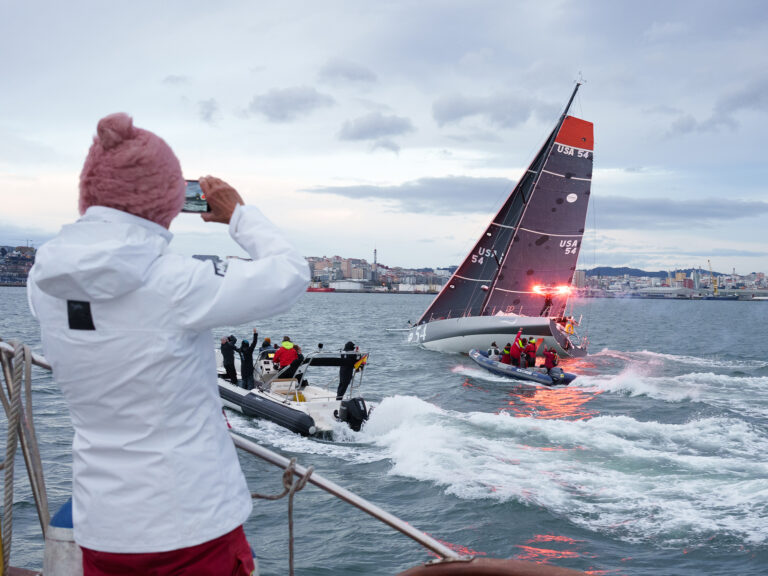
Cole Brauer Completes the Global Solo Challenge
- Digital Edition
- Customer Service
- Privacy Policy
- Email Newsletters
- Cruising World
- Sailing World
- Salt Water Sportsman
- Sport Fishing
- Wakeboarding
NORTH AMERICA'S LARGEST AND MOST ADVANCED DINGHY FACTORY
Country/region
- Australia AUD $
- Austria EUR €
- Belgium EUR €
- Canada CAD $
- Czechia CZK Kč
- Denmark DKK kr.
- Finland EUR €
- France EUR €
- Germany EUR €
- Hong Kong SAR HKD $
- Ireland EUR €
- Israel ILS ₪
- Italy EUR €
- Japan JPY ¥
- Malaysia MYR RM
- Netherlands EUR €
- New Zealand NZD $
- Norway USD $
- Poland PLN zł
- Portugal EUR €
- Singapore SGD $
- South Korea KRW ₩
- Spain EUR €
- Sweden SEK kr
- Switzerland CHF CHF
- United Arab Emirates AED د.إ
- United Kingdom GBP £
- United States USD $

Item added to your cart

fulcrumspeedworks
*NOTE: Sales team will contact you with shipping rates.

WHAT IS IT?
The UFO is a simplistic modern hydrofoiling boat, that allows anyone to fly through the air, freeing the hull from draggy water. More stable than the International Moth -or even a child’s pram- with a simple rig, and a set of fully retractable hydrofoils, all for $11,500 USD the UFO makes flying attainable. Thousands less than it’s nearest competition. Built in the United States in high volume and quality control, the UFO maintains a one-design philosophy, creating close and exciting racing on foils!
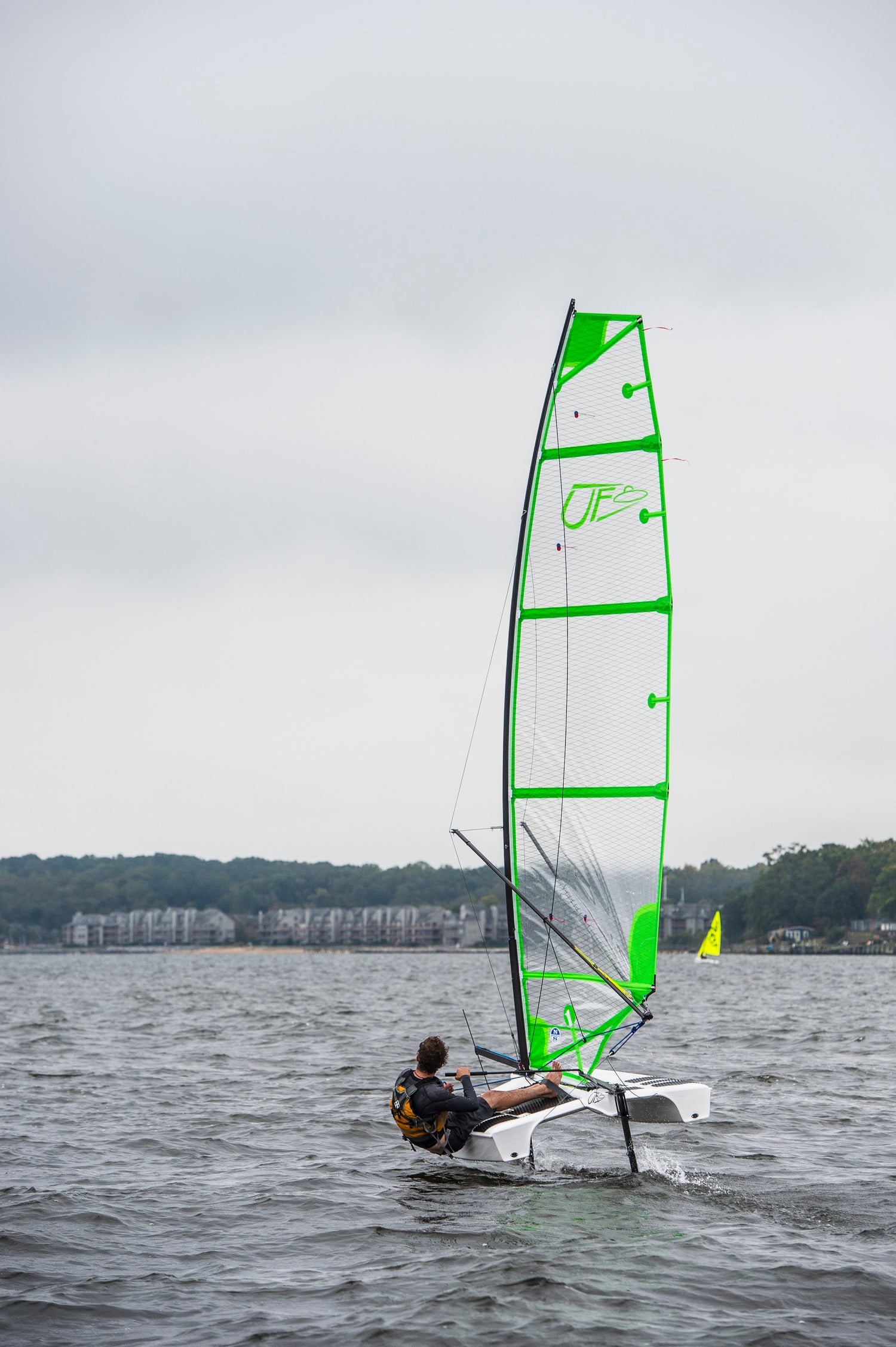
FLY WITH THE UFO
- Designed and built in the USA
- $11,500 USD
- Compatible and rewarding to all skill levels
- Lightweight for easy maneuverability
- Solid, nearly dent-proof, hull
- Unique patented hull and rig designs
- Stable on and above the water
- Small footprint for carefree storage and shipping
- Takeoff from about 8knts of wind
- Fast, fun, easy to control foiling

FUN FOR ALL AGES
The wand system controlling the foils, which can be set to fly very high, very low (even ‘no fly mode’) and all points in between. This means you can progressively add challenges to your UFO experience as you feel ready for them, from ‘beginner mode’ all the way to ‘extreme mode’. Additionally, the highly tunable sail can be set up to provide only the amount of power that your body type needs, and no excess. This means that the UFO is accessible and fun for sailors of all sizes, ages and skill levels. Merely set up the boat for your skill level and body type and go play around.
The UFO is very broadly applicable and has flown payloads from 70 pounds -a tiny kid- to 270 pounds -a tall grown man and a teenage boy-. The foil package just needs power to climb. Ultra light sailors have been caught on camera flying in 5 knots of breeze and the baseline for 225 pound sailors to take off is 10 knots. 270 flies in 12 knots of breeze.
SETUP AND BREAKDOWN
While the boat can be left on shore with everything in place, but the sail down, that doesn’t mean the UFO isn’t easy to put together or take apart. Quite the opposite. Simplicity begets simplicity and the boat is a cinch to put together and take apart.
MANAGEABILITY
Being small is it’s own reward when it comes to handling the boat through all sailing experiences. When you start to really push yourself learning to foil, there are good odds you’ll manage to capsize it. The UFO is easy to right from capsizes and even full “turtle” inversions. This last part is critical, because when catamarans are too heavy to right from turtle the only option is to make the mast float. This has the unintended downside of making the boat very likely to blow away from you. The UFO is designed to stay right alongside you in the event you are separated from the boat. Additionally, the boat possesses an uncommon “park” mode in which it will hold station of its own accord, apparently indefinitely without external input of any kind. The full benefits of that upside have not begun to be fully exploited.

FOILING AT ALL POINT OF SAIL
The Fulcrum design team strictly adhered to the axion “if there’s a point of sail (say, upwind or downwind) that it can’t always foil on, you can’t call it a foiler”. The design team achieved their goal and the UFO is a fully flying boat on all points of sail, which drastically increases its fun-factor.
At what points of sail does the UFO foil at?
The UFO fully foils at all points of sail. Upwind, downwind and reaching. Additionally, you can set it to not foil when you’re tired and it will do that as well, so you can get home easily. These two factors make the UFO uniquely good for learning to foil.
Who can fly the UFO?
Within reason, anyone.
UFO pilots have ranged from 8 years old to 72, from 90 pounds to 235. Young sailors do well sailing as pairs or with a middleweight to light adult. It’s rare that anyone on the fulcrum team conceives of a boat with a narrow niche in mind. Why bother? It’s a mistake in yacht design to design a boat for a narrow range of users, when for the most part people are diverse and the objective of one-design boats is to garner large fleets. That said, the boat is likely to be most satisfactory in all wind conditions in the hands of teens, small and medium men and all women. At the extreme low end of the weight range, sailors may find themselves overpowered and at the extreme high end, the wind speed required for takeoff is about two knots higher than average. UFOs have been sailed “two up” as well, though the above limits of weight range still apply to the sum of the two sailors weights.
What wind and waves can I fly a UFO in?
The UFO will sail in practically any wind condition. However, it’s important to remember that with all sailboats there are days that are great to sail in and days where you do something else.
While the UFO can at times with a skilled skipper take off in very low wind speeds, the baseline for reliable flight is around eight knots. Trying to squeeze enough power to fly out of too little wind is tiresome and in those circumstances, it’s best to do something else. In 8 knots and above, flying is magical and unforgettable. In under 8 knots, the UFO reverts to being a pleasant displacement catamaran and goes from being exciting and fast to relaxing and tactical. This is another benefit of being a catamaran.
Over the last six years the UFO has proven to be uniquely good at flying safely and consistently in very high windspeeds. In multi-class foiling regattas the UFO has proven to be the only foiler built to date that simply loves high windspeeds. In winds above 22 knots when other foiling boats make for shore, the UFO wants to keep playing. The upper wind limit is more a matter of taste and skill. UFOs have been sailed in 36 knots, but that requires a great deal of skill and focus. The UFO rig having shared DNA with a windsurf rig seems to play a part in the boat’s remarkable ability to get a kick out of big wind. Since the upper wind limit on the UFO is so much higher, this makes the number of optimal days to fly a UFO (if skilled in sailing one) higher per year than with any other production foiling boat.
Most chop and wave conditions present no issue for a UFO set for the days’ conditions. After all, powered hydrofoils were first developed by various leading Navy’s as a means of smoothly flying over challenging sea-states. Choking up the ride height helps the UFO fly smoothly through the bottom of the wave pattern, undeterred. Rolling seas present even less issue, as the UFO will ride along them just like any other. Extremely tight and tall chop can be very annoying, which is not peculiar to the UFO.
Waves do effect baseline windspeeds to achieve takeoff. Imagine getting a plane to take off on a bumpy runway. This is true for all hydrofoil boats. In choppy water, ten to twelve knots can be necessary to achieve fully easy takeoffs. Some UFO sailors use aggressive kinetic techniques to overcome this and take off in choppy water and low wind.
Will I fly my first time out?
Most people do, but bear in mind that flying is a whole new experience and it takes some learning.
Conditions, setup and technique matter and if you use it incorrectly, you are likely to get some degree of incorrect results. That’s the challenge that the UFO is built to address. Over six years on the market and over 500 boats delivered, the UFO has proven to be the best and most reliable platform for ordinary sailors to reliably teach themselves foiling technique on.
What happens when I crash my UFO into something?
You’ll probably do some damage to it.
The UFO is built with durability as a core objective but it’s worth noting that the gulf between “Feather light under engineered ragged-edge high performance craft” and “literally indestructible” is extremely wide. The UFO represents neither of these extremes. Do not attempt your first flight inside a densely packed mooring field. Obstacles only make you better once you’ve mastered the basics.
How easy is it to rig a UFO?
Best in class, vs other foiling boats on the market. With that said, it’s not easier than doing nothing. Doing nothing is very easy! Putting a boat together is worthwhile but obviously involves effort.
The current cartop to launched speed record is roughly 15 minutes. Socket the mast together. Attach the boom and stays in one go. Step the rig. Flip the boat on its side, insert the foils, right the boat, hoist the sail and launch. Complexity is best avoided.
Leaving the UFO on a dock or a beach with the rig in and the foils simply in the “up” position, achieves an ease of daily use on par with any light beach cat. To go foiling all you need to do is hoist the sail with the halyard, clip the sail to the boom and attach the downhaul line and you’re ready to launch. This brings setup and breakdown to a matter of five minutes or less.
How do I launch and land a UFO?
Far far far more easily than any other foiling boat on the market.
Because the UFO is a very small catamaran, while floating the hulls float relatively deep in the water and create lateral resistance, like the hulls on a hobie 16 or hobie wave. This means that it can sail upwind without a daggerboard of any kind in the water. This is not the case with non-catamaran foilers. The rudder is outfitted with a friction brake and a down-halyard to allow its depth to vary and allow steering in shallow water. So from 16 inches of water and beyond, you can sail away from and back to shore reliably.
Because the UFO’s forward foil assembly is located in front of the mast, the UFO can tack and gybe while the forward foil is fully withdrawn from the water. This is unique. It allows the UFO to navigate reliably in the period between launching or landing and flying. The benefits for usability and safety cannot be overstated.
Once you’ve got to deep enough water, lower your foils fully and fly away!
That’s if you’re using a dolly.
If you aren’t using a dolly, the UFO has even more party tricks to show off. Since the foils withdraw to above the waterline of the hull, the hull can be beached or slid up onto a dock float or boat deck without any risk to damaging the foils. The UFO is a boat that’s eager to go sailing.
Can I easily cartop a UFO?
At this hull weight, the boat is very easy to put on top of a car, and its flat bottoms allow it to be strapped down hard with no drama. The other components of the boat collapse down to the point of easily fitting in a standard hatchback.
Where can I store my UFO?
Anywhere you can carry it to. Anywhere it fits.
Behind couches, under beds, under porches, in basements, inside larger boats, chained to apartment fire escapes, hanging in garages. Anywhere it can go that’s convenient for your lifestyle is a good place for it to go.
Why does X look like Y? Surely it would be better to make it like Z.
Just trust us.
If you’ve thought of it, we’ve weighed the pros and cons and its been included or excluded for good reason. Creating a boat that can be produced at an affordable price, for a wide range of sailors with a maximum quantity of accessible performance is an extremely hard target to hit. The UFO meets all of its objectives and does so by blatantly ignoring a few conventions and norms. You simply don’t make an omelet without breaking eggs.
- Choosing a selection results in a full page refresh.
- Opens in a new window.

Everything electric boats and boating

This new high speed ferry is an electric hydrofoil catamaran
Green city ferries of stockholm unveils zero emission ferry – high-speed electric hydrofoil catamaran powered by batteries and/or hydrogen fuel cells..
Green City (GCF) bills itself as a ‘system integrator’ and their new ferry, the Beluga24, demonstrates their capabilities perfectly in bringing together technologies from all over the world: Sweden, New Zealand, Italy, Japan and Canada.
Naval Architect Hans Thornell founded the company in 2013 to combine three things: his passion for the environment and commitment to reducing carbon emissions, his education as a Naval Architect at Sweden’s Royal Institute of Technology, and his long experience as a management and supply chain consultant.

Electric hydrofoil catamaran designed for city transit
The all new Beluga24, with its foil-assisted catamaran design and battery/fuel cell propulsion, was designed from the outset to be a solution for the new and future challenges faced by water-situated cities around the world.
Officials in these places are eager to use the water for public transport and commuting, but the boats need to live up to citizen demands for a lot of things: short travel time, personal comfort, frequent departures, and an increasing urgency not just for cleaner air and less smog, but also visible and meaningful ways to address carbon emissions and their role in climate change.
By integrating design, technologies and experts from literally all over the world, the Beluga24 ticks off all the boxes for urban commuters and governments.
Rapid transit, quick charging, comfortable, convenient
For short travel time, the Beluga24 turned to Nic de Waal and Teknicraft of New Zealand, whose foiling technology has been proven on numerous boats and ships. A foil is placed midship that lifts the ferry halfway out of the water at high speed, reducing the water resistance and enabling more speed from less energy. “We expect a consumption of 30 kWh per nautical mile at 30 knots, which is almost half of what a conventional catamaran consumes,” says company CEO Fredrik Thornell.

There is also has room for 30 bicycles, which are becoming an important part of the transportation mix for cities working to combat climate change.
Frequent departures and zero emissions? The Beluga has it covered. The power supply comes from Japanese lithium titanite oxide (LTO) batteries – the same chemistry used for the fast charging of the Movitz. Hydrogen fuel cells are sourced from Canada, and depending on the customer’s preference the ferry can be built to run off batteries, fuel cells, or both.
Greater efficiency = lower costs
With their experience on the Movitz and other public transportation projects, Green City knows there is another part of the equation that civic officials are looking for beyond passenger convenience and cleaner operation: costs.
For many PTAs (Public Transit Authorities) the most important service GCF provides is innovative financing that simplifies allocating or raising the funds needed, reduces costs, and cuts the time it takes to put new boats into service from years to months.
The final piece in the international expertise of the Beluga24 development is the headquarters of GCF itself: Sweden. The country has decades of experience building ships in carbon fibre and the first Beluga24s will initially be built in Sweden, going into the water for 2023. Green City Ferries has full exclusivity to build and sell this type of ship in carbon fibre globally.
CEO Thornell says “The Beluga24 is demonstrating a high-speed emission-free alternative to diesel ferries that also costs less to operate. It’s a solution highly attractive to transport administrations, shipping companies and most importantly for people!”
A future of fast, fossil-free ferries
GCF Marketing and Sales Manager Magnus Sörenson adds that “Interest in sustainable waterborne transport and demand for emission-free vessels is increasing exponentially. Analysts claim that the global market for emission-free vessels is expected to increase from USD 5.2 billion in 2019 to USD 15.6 billion by 2030, and passenger ferries are a large part of this.”
The proof of that interest is evident all around the world:
- Electric commuter ferries and riverboats are helping Bangkok control its dangerous smogs levels
- an all-electric high performance ferry is undergoing sea trials in New Zealand for launch in September
- India’s solar-powered commuter ferry Aditya has carried 1.35M passengers in the past 4 years
- the council of Trøndelag County in Norway sponsored a competition for high speed zero emission ferry concepts
- a consortium in Ireland led by Artemis Technologies has received a government innovation grant of £33 million (€36M, $US40M) to develop high speed ferries…
- and if you want to see more what the future has in store, check out the ‘In Development’ division of the ‘Electric Boats Designed for Paying Passengers in this year’s Gustave Trouvé Electric Boat Awards.
Exciting things are happening every day in electric boats and boating. Subscribe to the Plugboats newsletter so you don’t miss a thing!
Email address:
Follow Plugboats on »» facebook , »» twitter »» Instagram »» Linkedin
- ← Book Review: Solar Electric Boats: Plan, Build and Benefit
- Electric boat exhibitors at 10 shows this August/September →
Leave a comment Cancel reply

Get all the latest electric boats and boating news delivered to your mailbox!
Sign up here for the plugboats newsletter..
IT’S FREE!
No, thanks.
Terms and Conditions - Privacy Policy
- Hydrofoil Technology
Bering Marine uses HYSUCAT Technology
Our unique foil assist technology provides an optimal self-correcting dynamic. The foils carry between 40% to 75% of the vessel’s displacement. This reduces the hulls’ volume which greatly decreases drag and improves seakeeping.
Efficiency, seakeeping, low wake wash, and decreased emissions provide substantial benefits to our customers. Reduced drag on the underwater sections of our vessel improves efficiency. This results in lower propulsion requirements, reduced fuel consumption, and a lighter vessel.
The hydrofoil wings create an inherent dampening effect, giving the vessel a much smoother ride. This enables the boat to operate at a higher average speed in rough and unpredictable seas. Lowered resistance and decreased propulsion power reduce wake wash signature which is beneficial for waterways that have wave wash restrictions and limitations. Additionally, the foil assist cat is the optimal form for the type of use that requires speeds over 30 knots.
Other Bering Marine advantages include operator friendliness — no special knowledge or skills required to operate — and a 30% reduction in fuel burn at operating speeds. A 50% reduction of vertical accelerations improves passenger comfort and reduces scantlings. In critical wake wash applications, the Hysucat foil system achieves a wave cancellation effect between the hulls and foils. The catamaran hull also provides higher initial stability for lower resistance and improved passenger comfort.

Hydrofoil Technology advantages:
- Produces dynamic forces that partly lift the catamaran out of the water. Reduced friction allows the boat to reach higher maximal speeds.
- Improves fuel efficiency while gliding on top of the water.
- Ensures a strong absorption of vertical and pitch movements. This guarantees constant and gentle sliding and dipping in the waves. The hull remains stable during the entire voyage and shows no signs of hard impact. Longer distances, even in rough waters, can be traveled without any major physical fatigue symptoms.
- Allows the boat to run with smaller engines than an equivalent-sized monohull. This decreases the cost of the vessel and improves fuel consumption.
PRODUCTS/ DESIGNS
Hydrofoil supported catamarans.

30m Ambulance Boat
25.5m firefighting catamaran with telescopic fire monitors (FIFI 1 compliant)

25m SAR Catamaran
Search and Rescue Catamaran with firefighting capability developed for the Macau Airport Authority

25m Firefighting Catamaran

15.6m HYSUCAT Ferry
15.6m HYSUCAT Ferry Leading Particulars Length overall 15.6m Length waterline 13.4m Beam 4.9m Draught (max....

14.9m Water Taxi
14.9m Water Taxi Leading Particulars Length overall 14.9m Length waterline 12.7m Beam max. 5.45m...

12.5m HYSUCAT dive boat
12.5m HYSUCAT Dive Boat Leading Particulars Length overall 12.5m Length waterline 10.2m Beam max. 4.2m...

11m HYSUCAT excursion boat
11m HYSUCAT Excursion Boat Leading Particulars Length overall 10.9m Length waterline 8.6m Beam max. 3.8m...

11m HYSUCAT
11m HYSUCAT Leading Particulars Length overall 10.9m Beam max. 3.98m Draught 0.6m Performance Service speed...

10m HYSUCAT
10m HYSUCAT Leading Particulars Length overall 10.1m Beam max. 3.49m Draught 0.44m Performance Service speed...

17.3m eCat HYSUCAT
17.3m eCat HYSUCAT Leading Particulars Length overall 17.38m Length waterline 15.64m Beam overall 6.45m...
Sign up to our newsletter
Suite 17-GA, The Waverley Business Park | Wyecroft Rd, Observatory | Cape Town, 7925 | South Africa
10 Rossing Str | Swakopmund | 13001 | Namibia
info@icarusmarine.com
(Republic of South Africa)+27 (0)21 447 4545
(Namibia)+264 (0)81 265 1716
Follow Us on Social Media
- Daily Deals
- Brand Outlet
- Help & Contact
- Watchlist Expand Watch List Loading... Sign in to see your user information
- Recently Viewed
- Bids/Offers
- Purchase History
- Saved Searches
- Saved Sellers
- Collection beta
- The eBay vault
- Notification
- Expand Cart Loading... Something went wrong. View cart for details.
Picture 1 of 21
Power catamaran 45ft hysucat - hydrofoil power cat - project.
- 100% positive
- Seller's other items Seller's other items
- Contact seller
- Add to watchlist
Oops! Looks like we're having trouble connecting to our server.
Refresh your browser window to try again.
Shop with confidence
Vehicle history report.
- The vehicle is too new to have a history report.
- The vehicle was manufactured prior to 1981.
- The vehicle didn't have a 17-digit vehicle identification number.
- The vehicle wasn't intended for the US market (such as limited production exotics).
- The seller didn't enter the vehicle identification number correctly.
Item specifics
Item description from the seller, shipping and handling.
- Choose Shipping Options Set your pickup and delivery timeframes Get Quotes Compare shipping quotes from top transporters Ship Your Item Choose a transporter and book securely online
Payment details
Vehicle purchase protection.

IMAGES
VIDEO
COMMENTS
Hydrofoil catamarans can reach speeds of up to 40 knots (46 mph) or more, depending on the design and conditions. The foils on a hydrofoil catamaran can lift the hulls out of the water, reducing drag and allowing for a smoother and faster ride. Hydrofoil catamarans are used for various purposes, including racing, recreational sailing, and even ...
It's hard to believe a piece of metal with no moving parts can be the approximate equivalent of adding 200 horsepower, 100 gallons of fuel and 100 miles of extra range. But when it's a hydrofoil attached between the hulls of an Aquila 36 Sport power catamaran (above, far right), that's the net effect. While the efficacy of foiling boats ...
Hydrofoil sailboats have wing-like foils mounted under the hull. As the hull speed increases due to the pressure on the sails (in some cases with just 10 knots of true wind), the hull lifts out of the water, reducing the wetted surface and decreasing drag. ... The DNA F1 A-class catamaran is designed for single-handed foiling. The carbon pre ...
Morrelli & Melvin have been working on power catamaran hydrofoil technology since the 1990s, constantly developing, testing, and improving on the current state of the art. The company has created approximately 100 foil-assisted power catamarans, and numerous fully foiling sailboats and participated in the last four America's Cup events as ...
The flight control system, combined with numerous fine-tuned innovations, ensures safe foiling even in strong winds and rough seas.. Stable flight attitude allows pushing hard, so in good conditions, iFLY reaches high boat speed beyond 30 knots in a controllable way. IFLY15 offers freedom to fly alone or in pairs.
The Flying Phantom catamaran seems to levitate above the water as it hydrofoils. "It's like removing the handbrake - suddenly everything gets smoother and faster in pure silence.". This ...
Hydrofoil Catamarans: Hydrofoil catamarans, also known as foilcats, combine the stability of a catamaran with the speed and efficiency of hydrofoils. These yachts can achieve impressive speeds while maintaining excellent stability, making them popular choices for racing and recreational sailing.
Hydrofoil catamarans work by using foil-shaped wings that protrude from the bottom of the boat, below the water line. The foils are designed to lift the vessel out of the water, reducing the surface area touching the water, and therefore reducing drag. As the boat moves forward, the airflow on the foils generate lift, causing the boat to rise ...
A Foiling Catamaran for 1-2 person(s) does not need to be any longer than this. ... Experience the ultimate hydrofoil sail racing with iFLY RAZZOR Pro - the iFLY15 on steroids. Enjoy limitless racing with the iFLY RAZZOR Pro foiling multihull, featuring additional iFLY rake control: The MDT - Main Foil Differential. More info on youtube iFLY15 ...
Join boats.com and Marilyn DeMartini in Cape Canaveral Florida along with Tarpon River Boatworks CEO Todd Meyer for a full walkthrough video tour and review ...
The first model fitted with hydrofoils will be the Sunreef 40 H - a 40-feet motor catamaran of an open type. A specialist in luxurious, custom-made, multi-hull vessels, the Sunreef Yachts shipyard is going to present a perfectly finished catamaran with sleek, sporty silhouette that will be the ideal choice for everyone who values perfect ...
Enjoy unmatched performance, range, and efficiency thanks to the 35IFC's hydrofoil-assisted design. In addition to being the best High-Performance Fishing Catamaran in its class, it also provides a smoother and dryer ride in the rough stuff! This boat was designed for people who fish, by people who fish! From its integrated livewells to its ...
Hydrofoil sailboats blend speed, stability, and innovation for a fun sailing experience. Their design lifts the hull above water, reducing drag and enabling high-speed travel. Advanced control mechanisms maintain stability in varying wind conditions. Sails and hulls are meticulously engineered for optimal aerodynamics and lift.
With razor-sharp hydrofoil catamarans that help them hit speeds of 60 miles an hour, the athletes of SailGP are pushing the limits of physics and human endur...
In 1906, his 1-ton 60 hp foiler reached 42.5 mph. Alexander Graham Bell's HD-4 Hydrodrome flew on Bras d' Or Lake at 70 mph in 1919. And several sailing foiler patents began appearing in the 1950s. Notably, JG Baker's 26-foot monohull, Monitor, flew at 30-plus mph in 1955. Baker experimented with a number of foil configurations, and at ...
The hybrid consisting of a catamaran with fully asymmetrical demi-hulls and a single hydrofoil spanning the tunnel between the two demi-hulls was named Hydrofoil Supported Catamaran or Hysucat in short. A research project was started to investigate and optimize the Hysucat principle (it is still running after 20 years!), see Hoppe (1980-1980a).
Bertrand Castelnérac had a similar eureka moment in Quiberon Bay in 2015. An intrepid, daredevil yachtsman of the sort that France seems to have a knack for producing, he was sailing a GC32—one of those hydrofoil catamaran sailboats for which insanity seems to be the principal qualification in a crewmember—when he noticed that his team's tender, a RIB containing tools, spare sails and ...
Learn About Aquila Hydro-Glide: https://bit.ly/3hO0xVxThe hull design of Aquila power catamarans is naturally more fuel-efficient and stable than comparable ...
A hydrofoil catamaran is an excellent option for someone looking for an exciting sailing experience. Visit Fulcrum Speedworks today for more information. ... Because the UFO is a very small catamaran, while floating the hulls float relatively deep in the water and create lateral resistance, like the hulls on a hobie 16 or hobie wave. This means ...
Electric hydrofoil catamaran designed for city transit. The all new Beluga24, with its foil-assisted catamaran design and battery/fuel cell propulsion, was designed from the outset to be a solution for the new and future challenges faced by water-situated cities around the world.
http://www.hysucat.com/Hysucat, an acronym for Hydrofoil Supported Catamaran, is the combination of a distinctively designed hull and foil incorporating hydr...
The hydrofoil wings create an inherent dampening effect, giving the vessel a much smoother ride. This enables the boat to operate at a higher average speed in rough and unpredictable seas. Lowered resistance and decreased propulsion power reduce wake wash signature which is beneficial for waterways that have wave wash restrictions and limitations.
HYDROFOIL SUPPORTED CATAMARANS. 30m Ambulance Boat 25.5m firefighting catamaran with telescopic fire monitors (FIFI 1 compliant) read more. 25m SAR Catamaran Search and Rescue Catamaran with firefighting capability developed for the Macau Airport Authority. read more. 25m Firefighting Catamaran 25.5m firefighting catamaran with telescopic fire ...
Power Catamaran 45ft HYSUCAT - Hydrofoil Power Cat - PROJECT. chevyelc69 (261) 100% positive; Seller's other items Seller's other items; Contact seller; US $1.00. 0 bids. Ends in 6d 19h. Reserve not met. A reserve price is the minimum price the seller will accept. This price is hidden from bidders. To win, a bidder must have the highest bid and ...